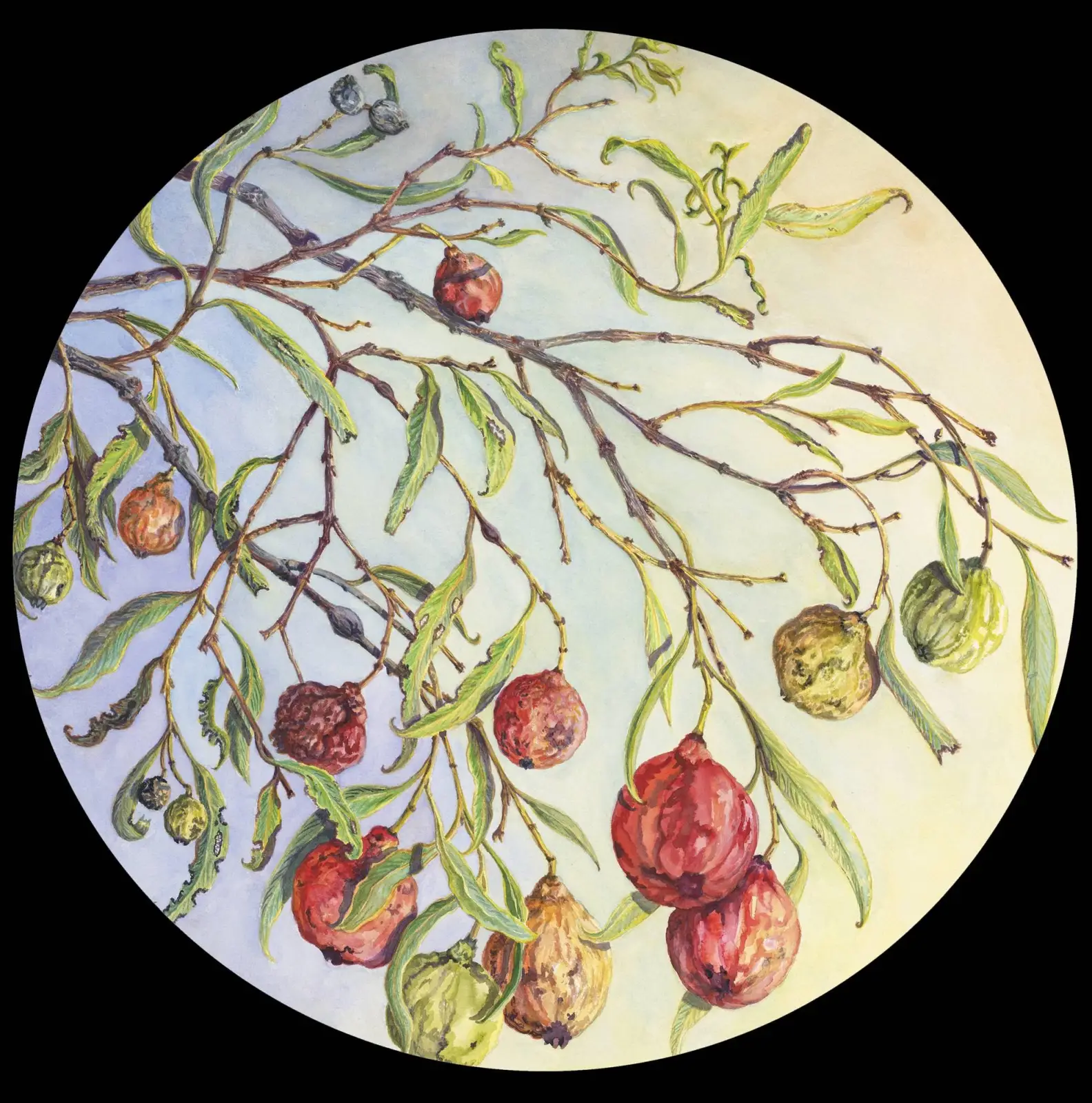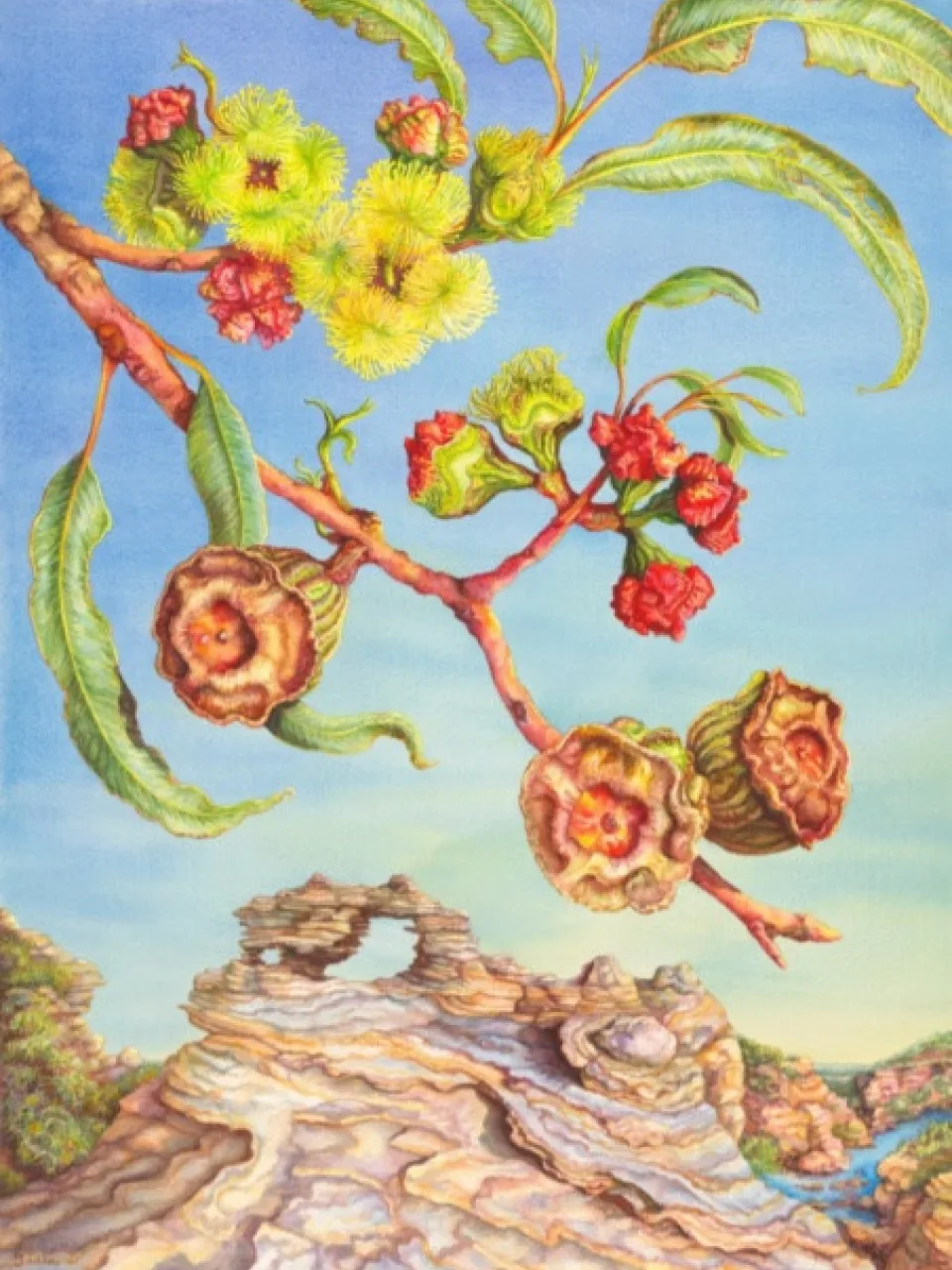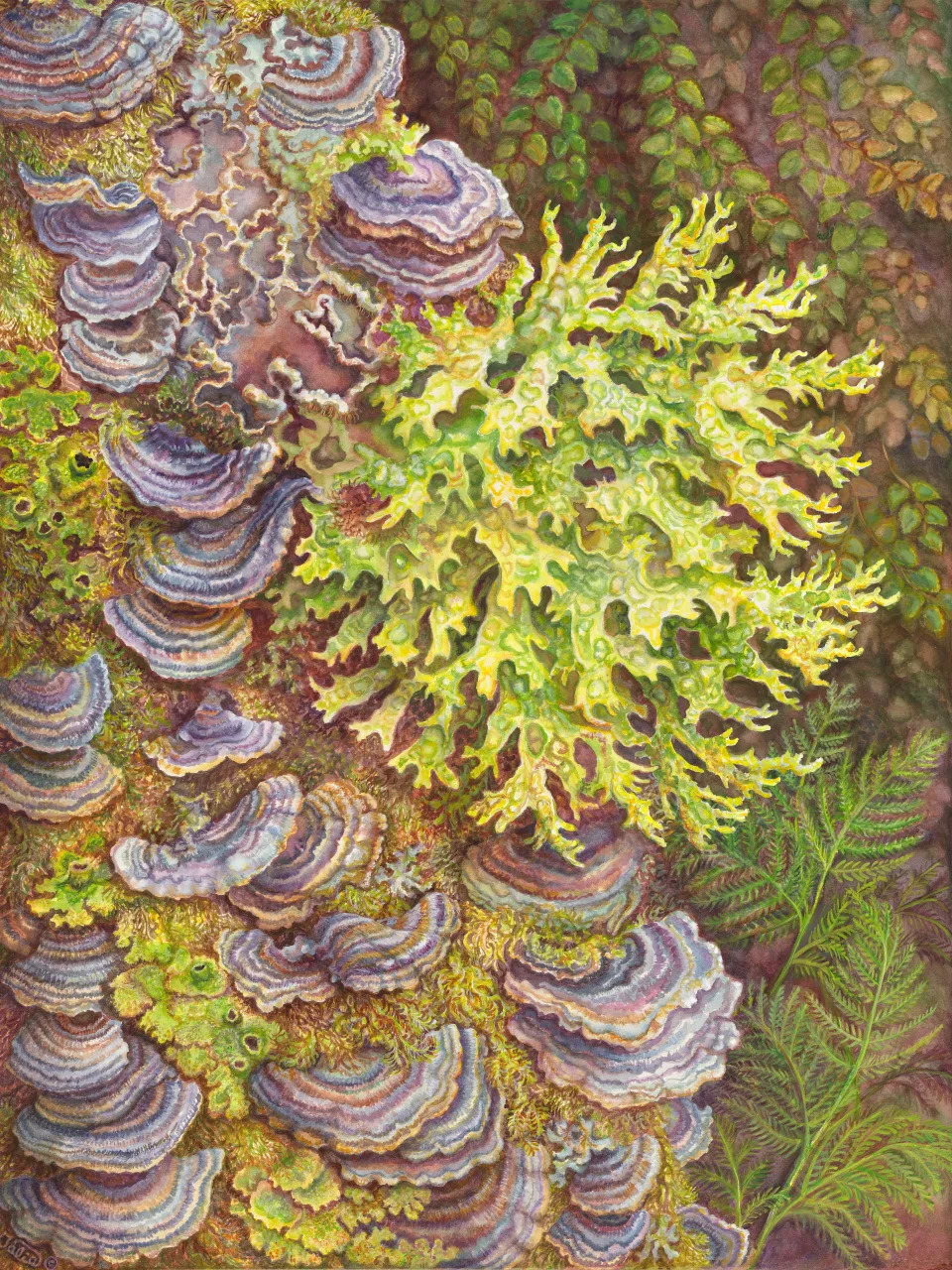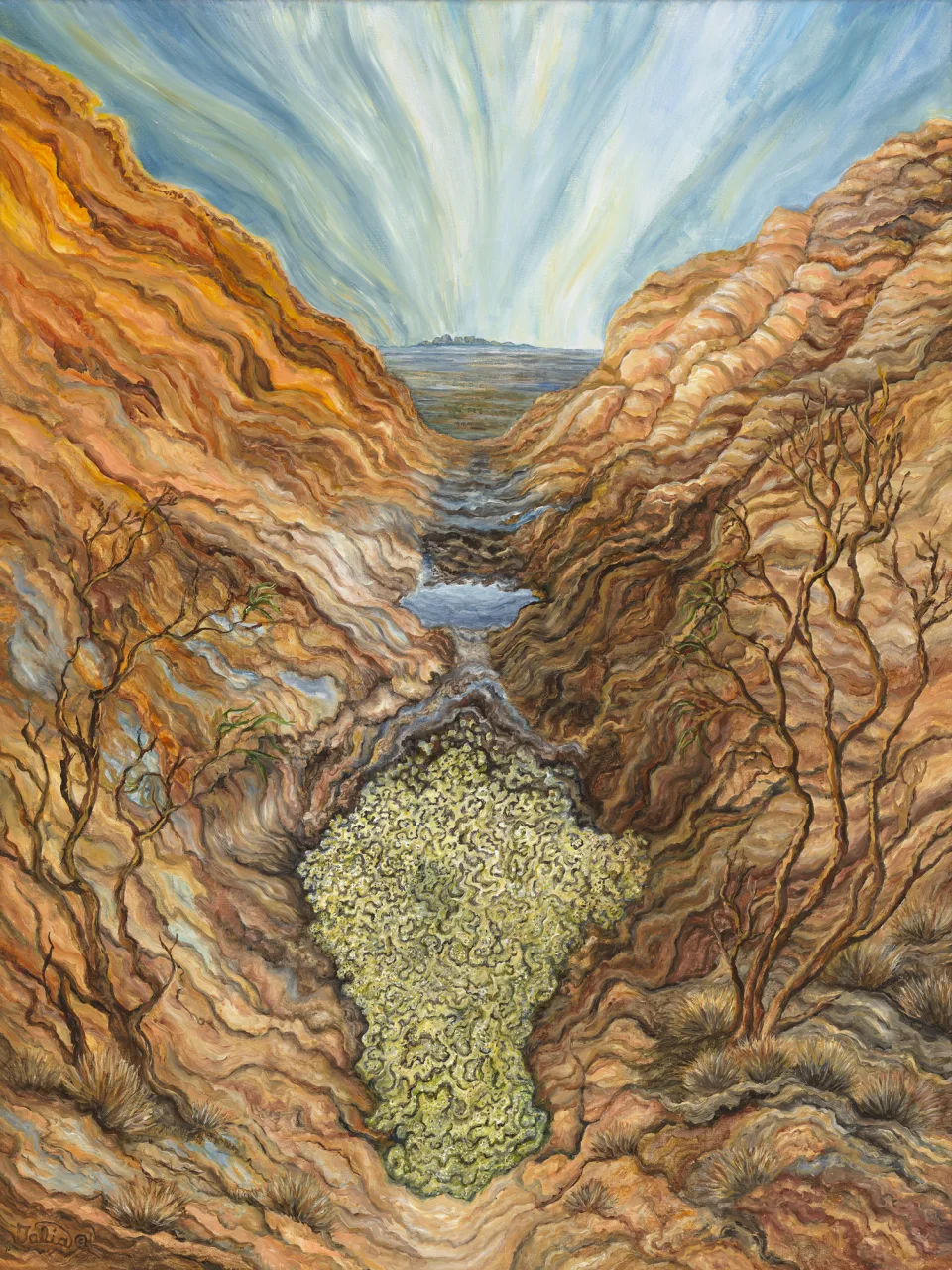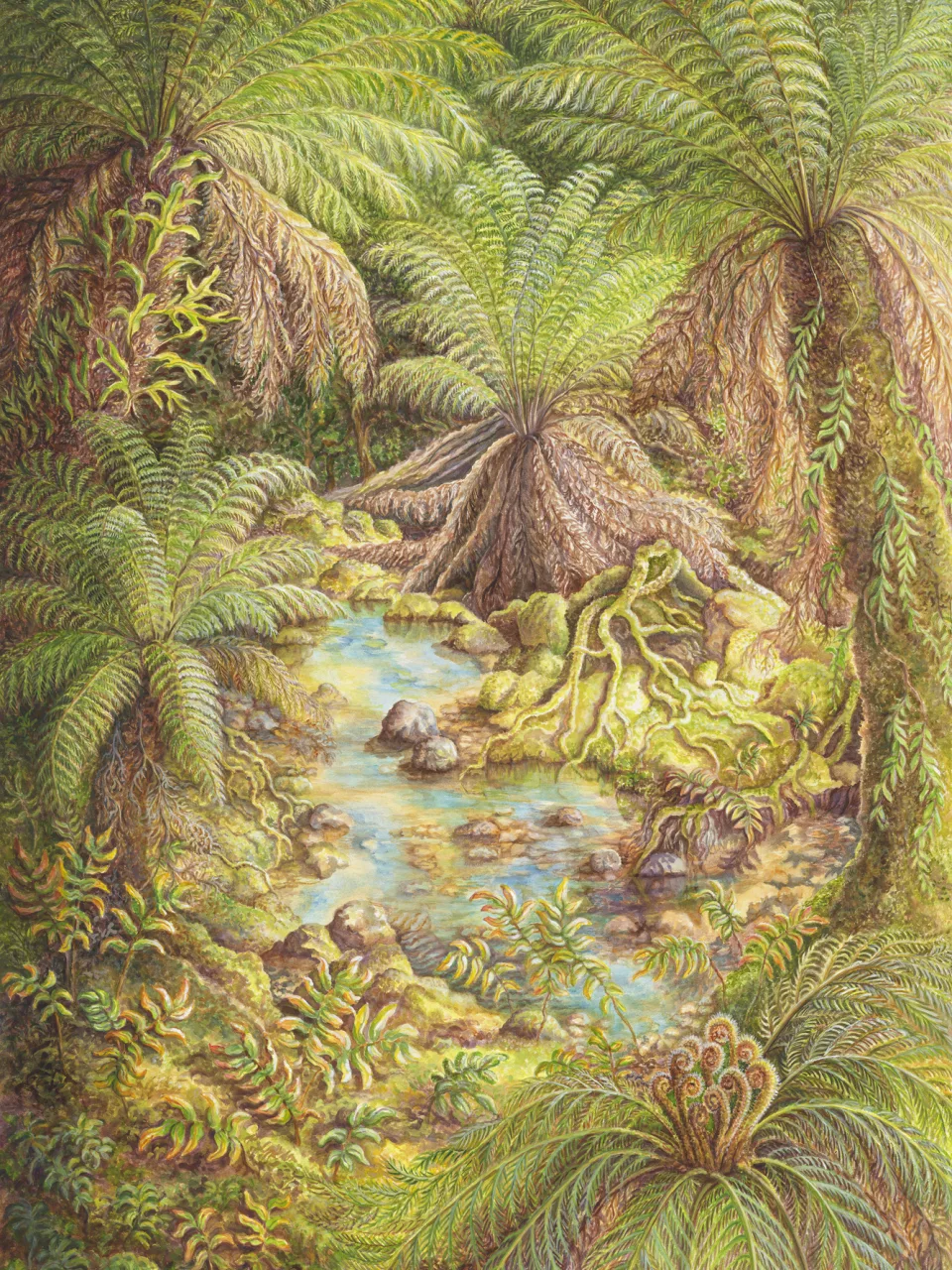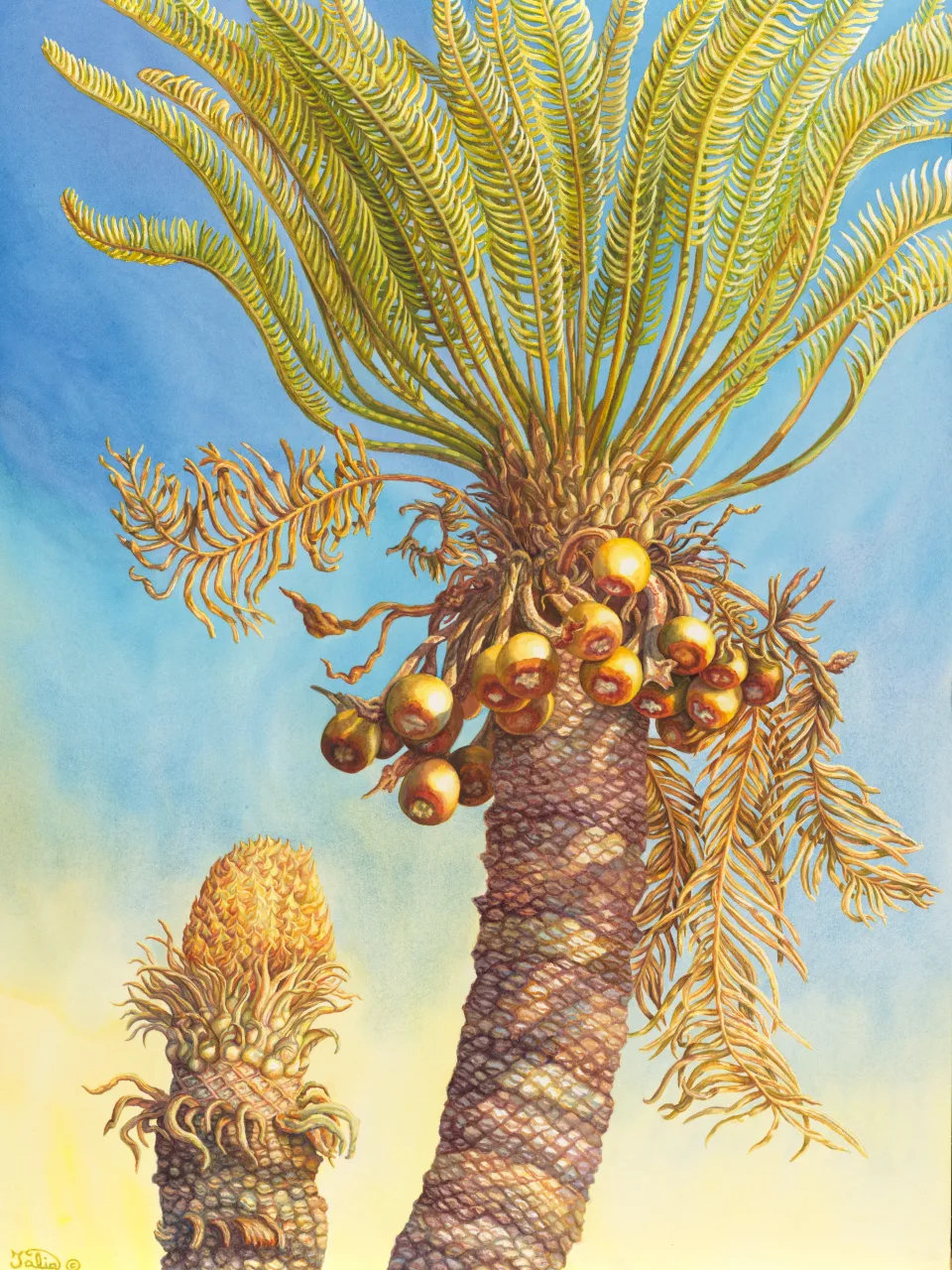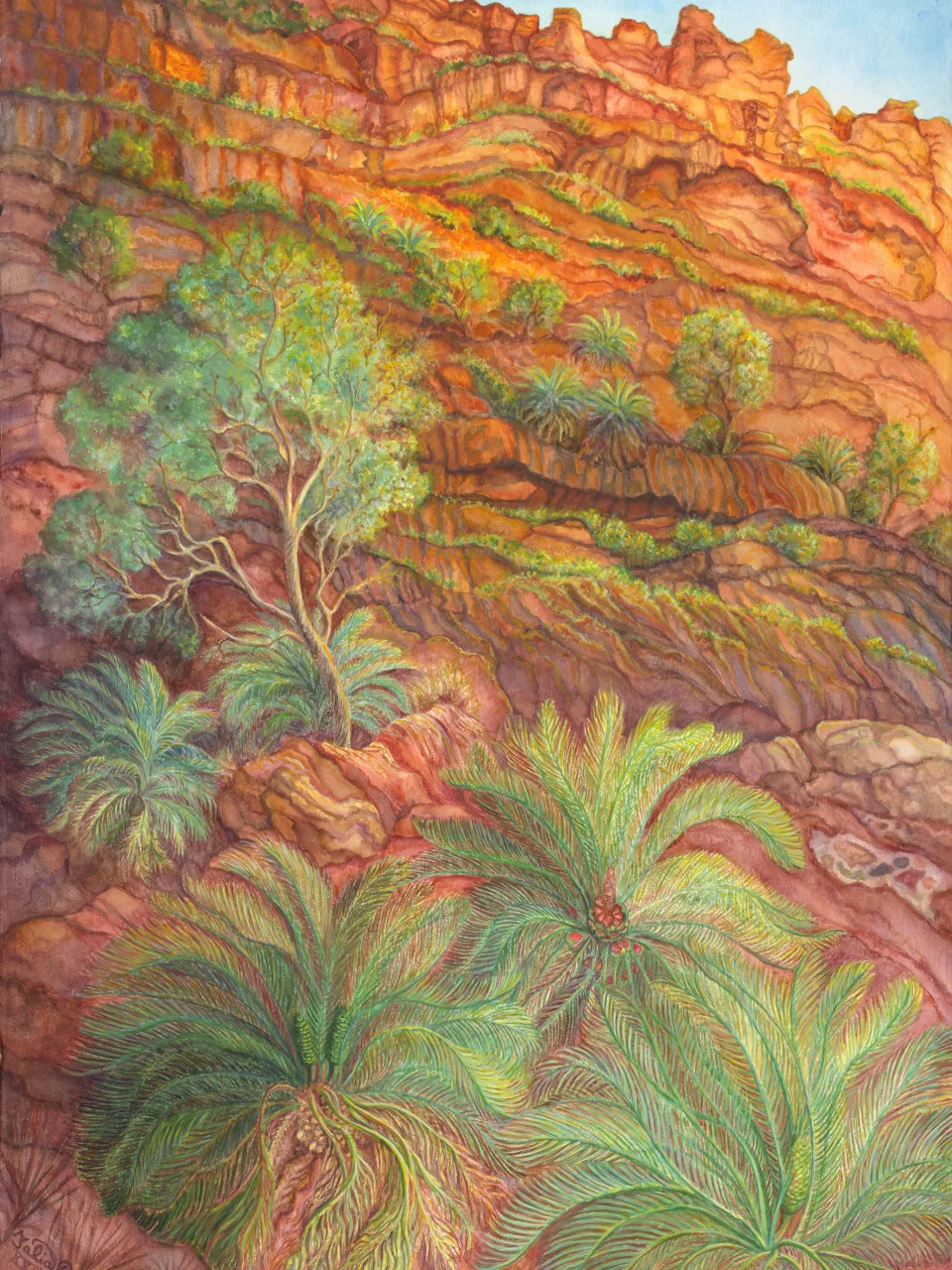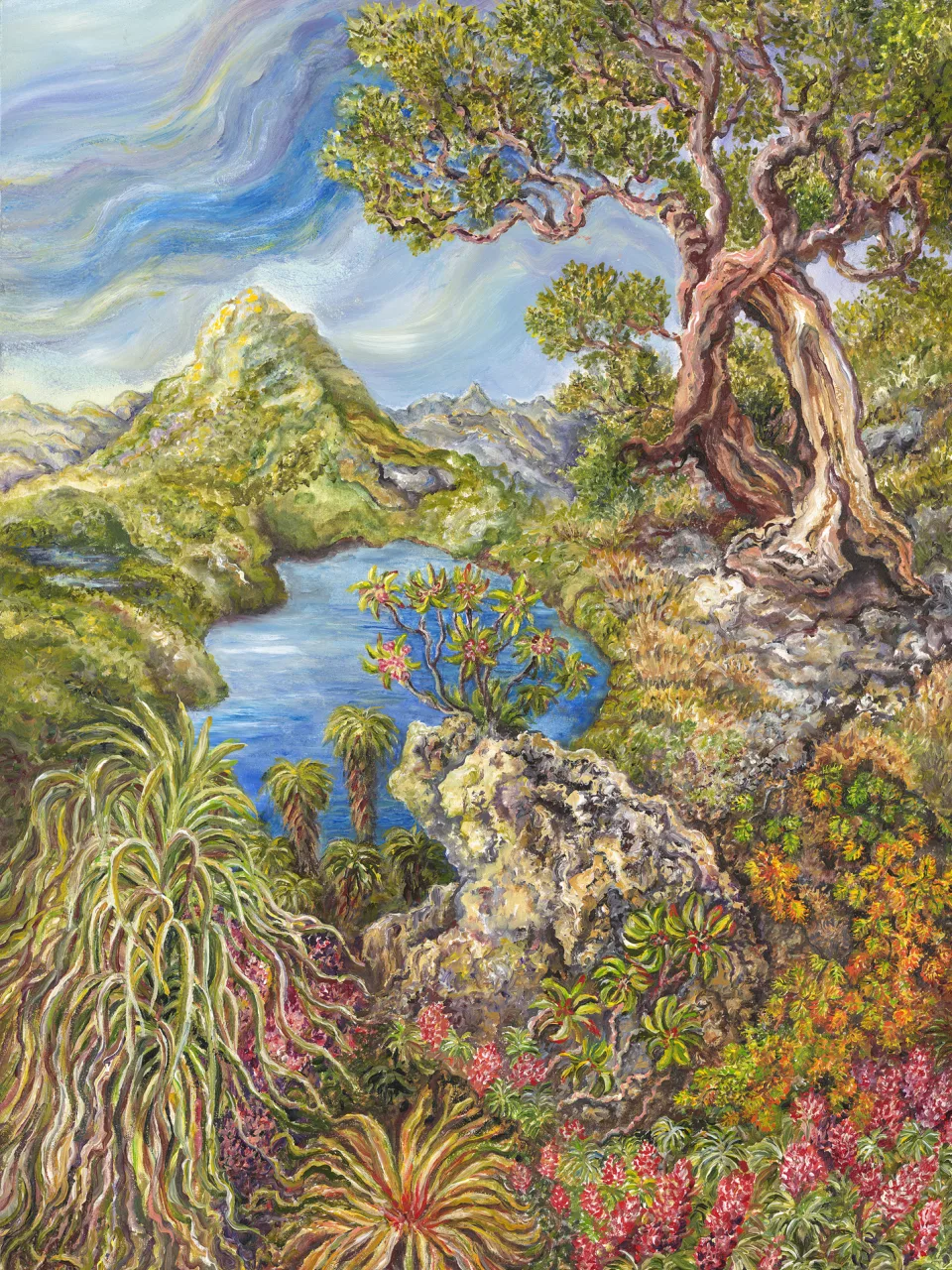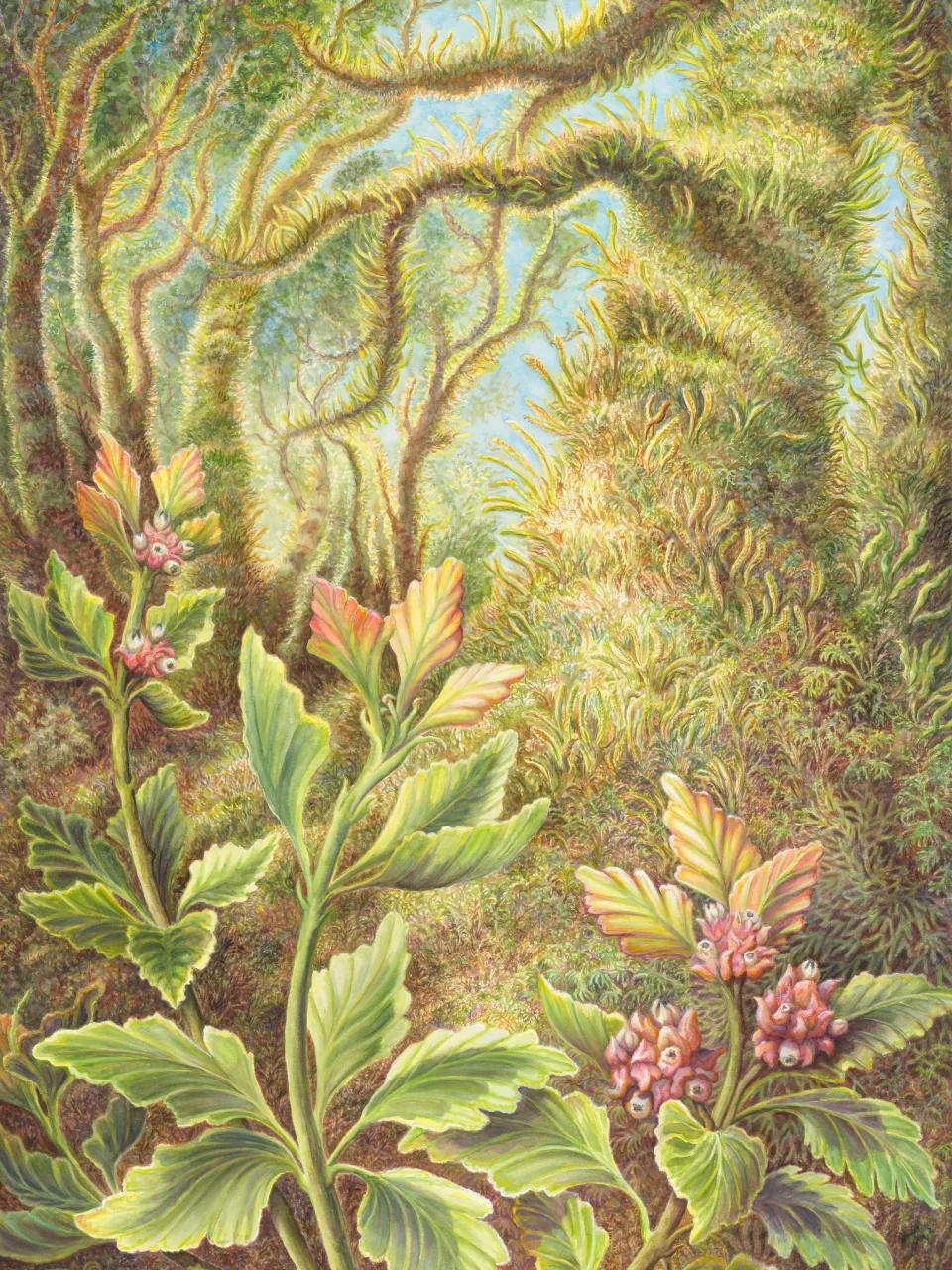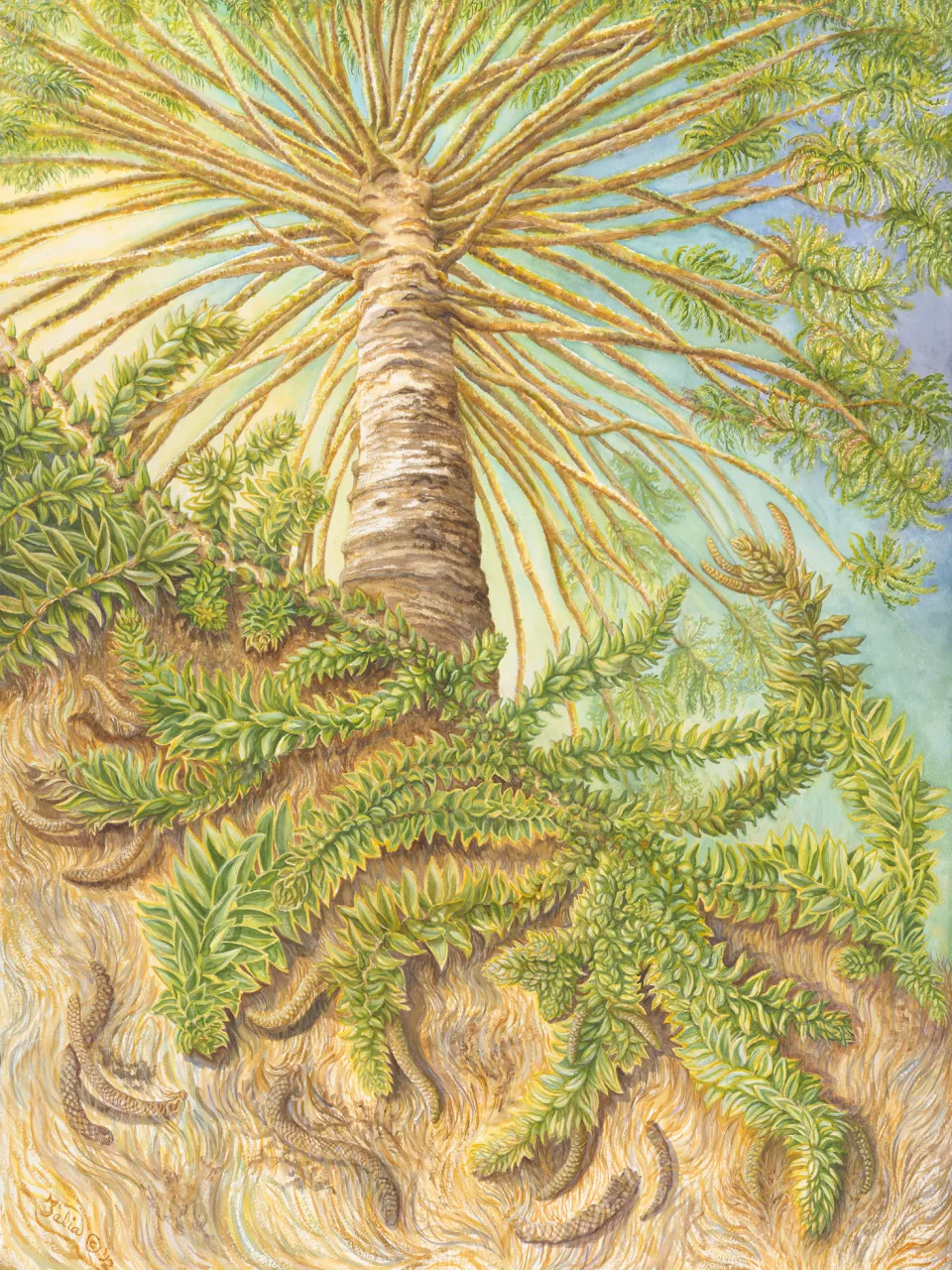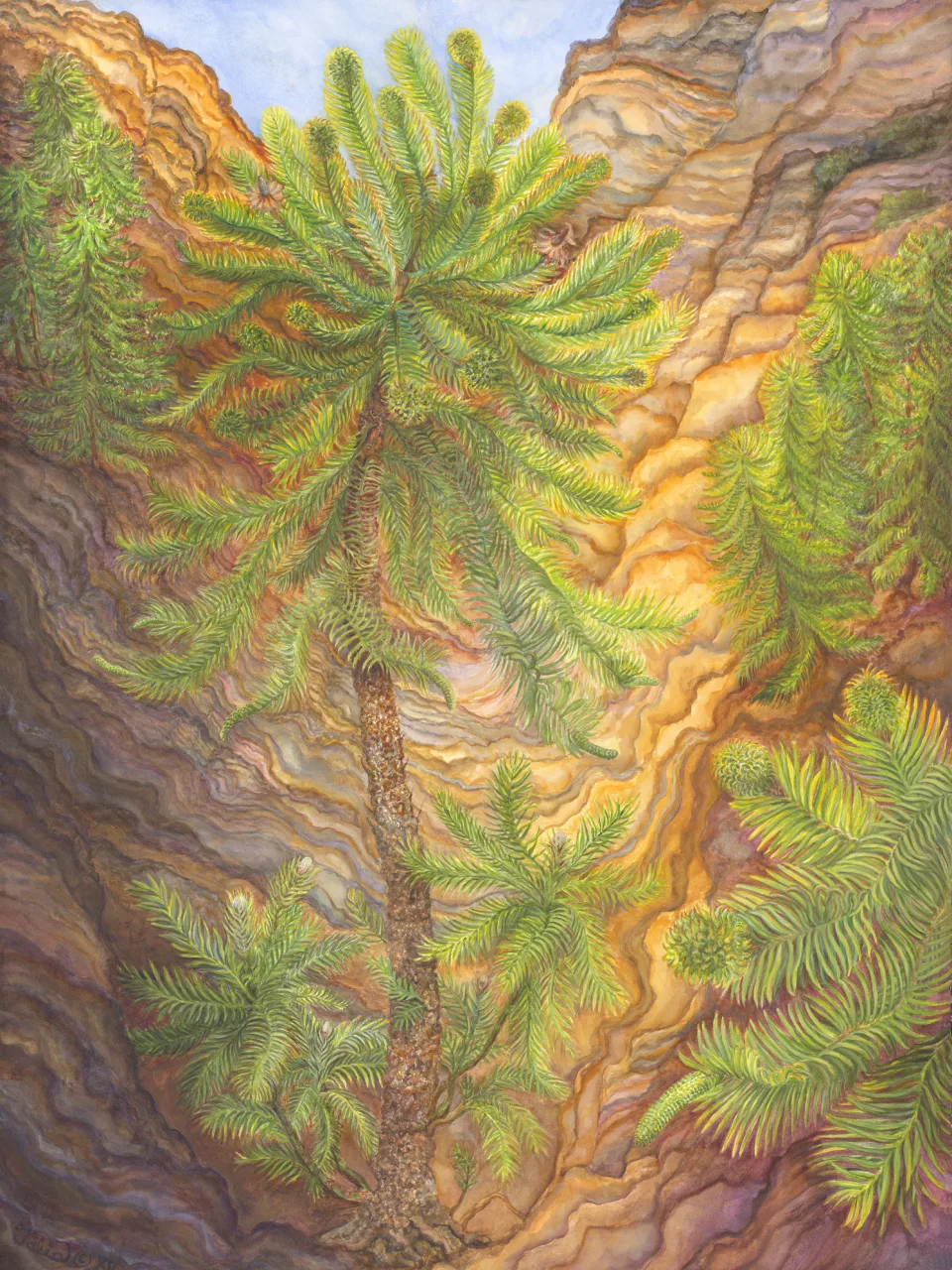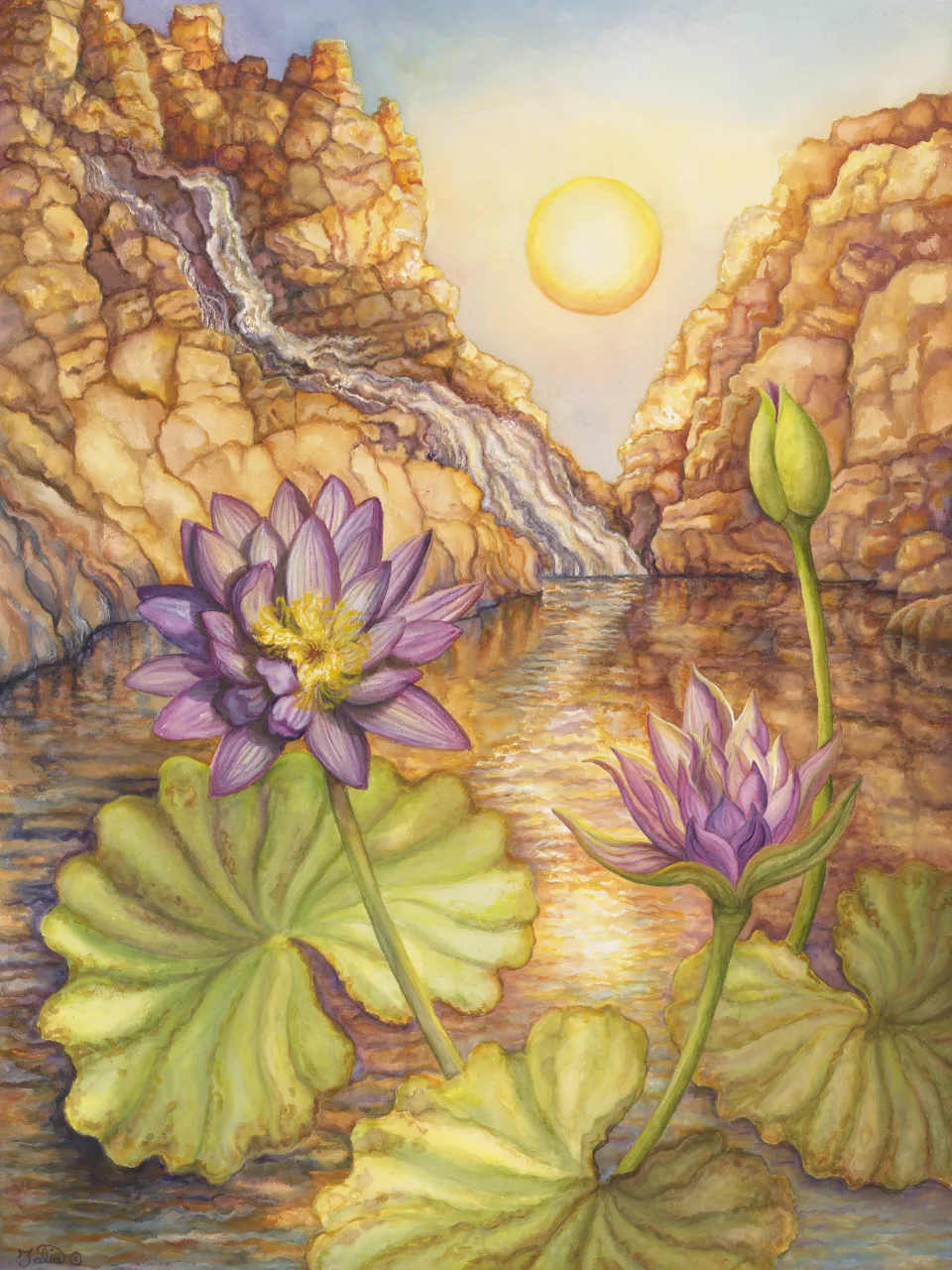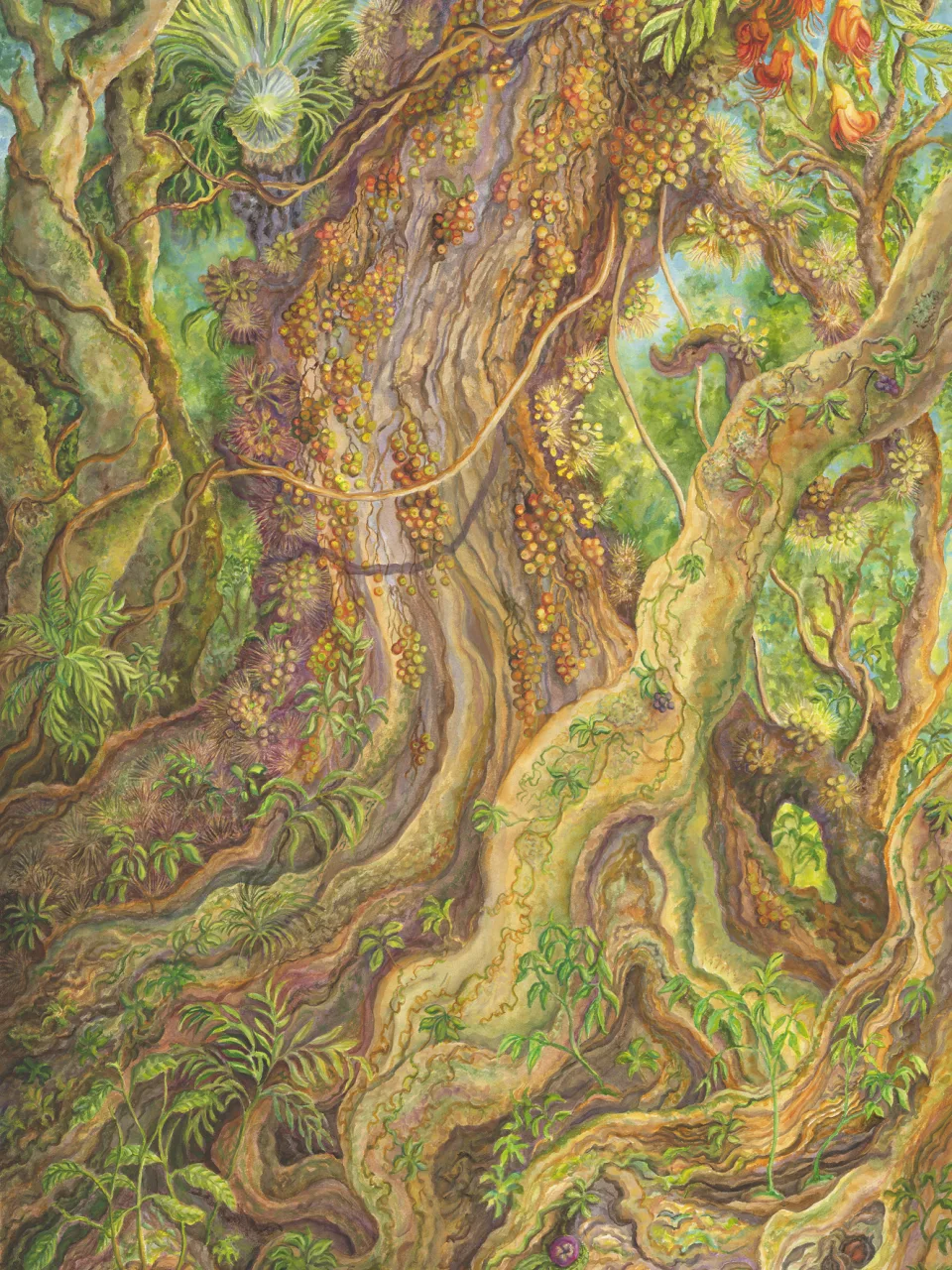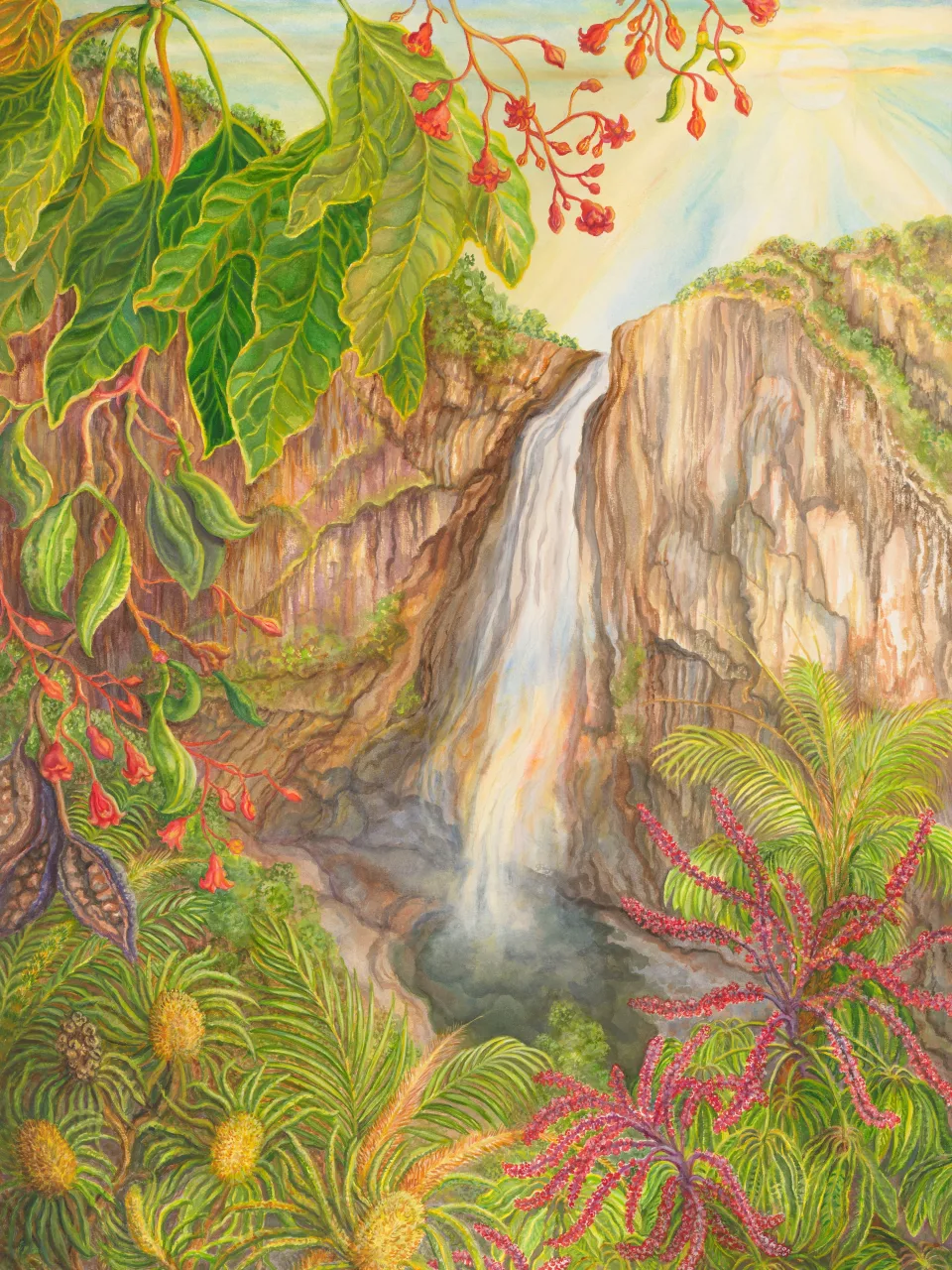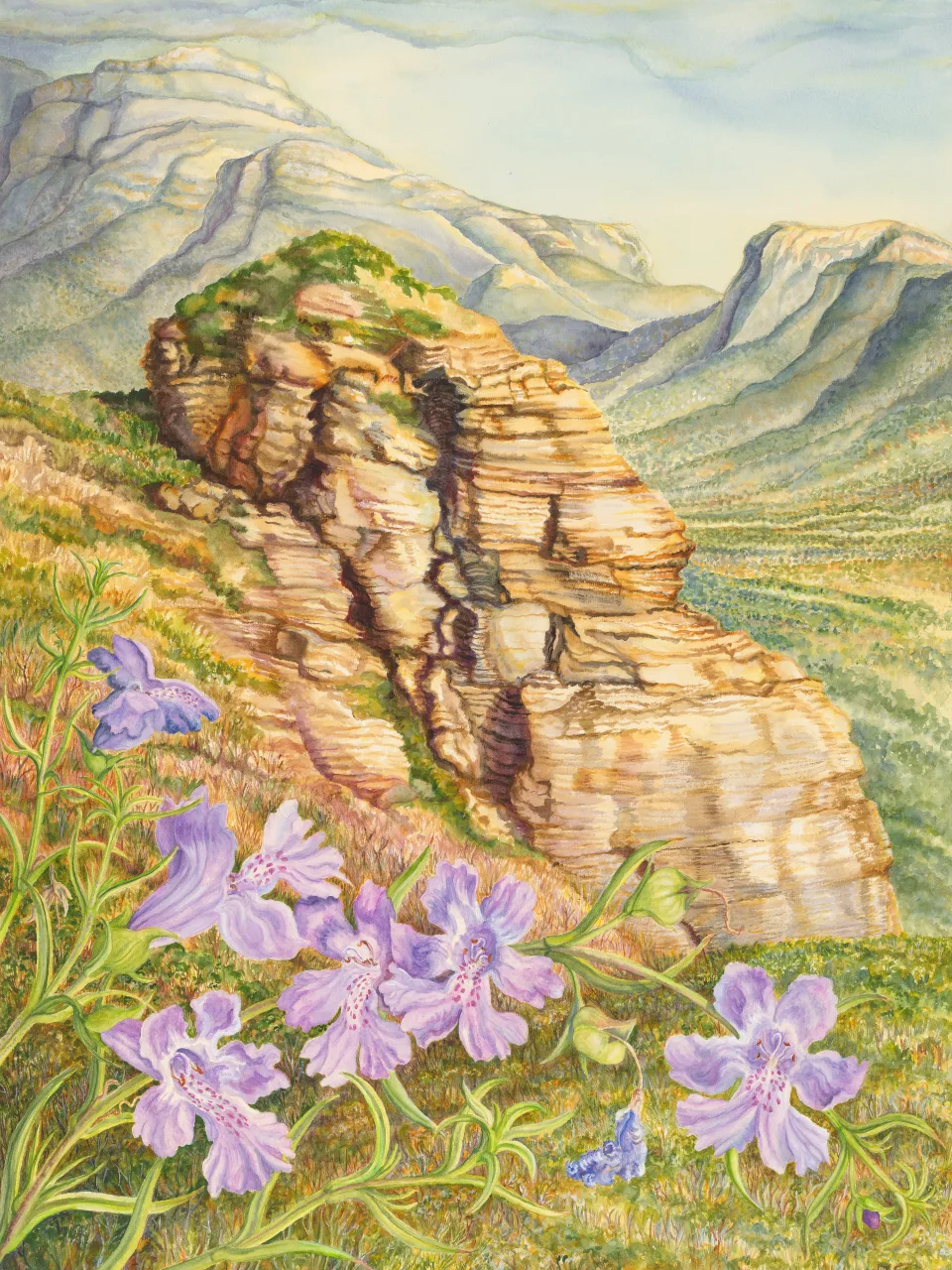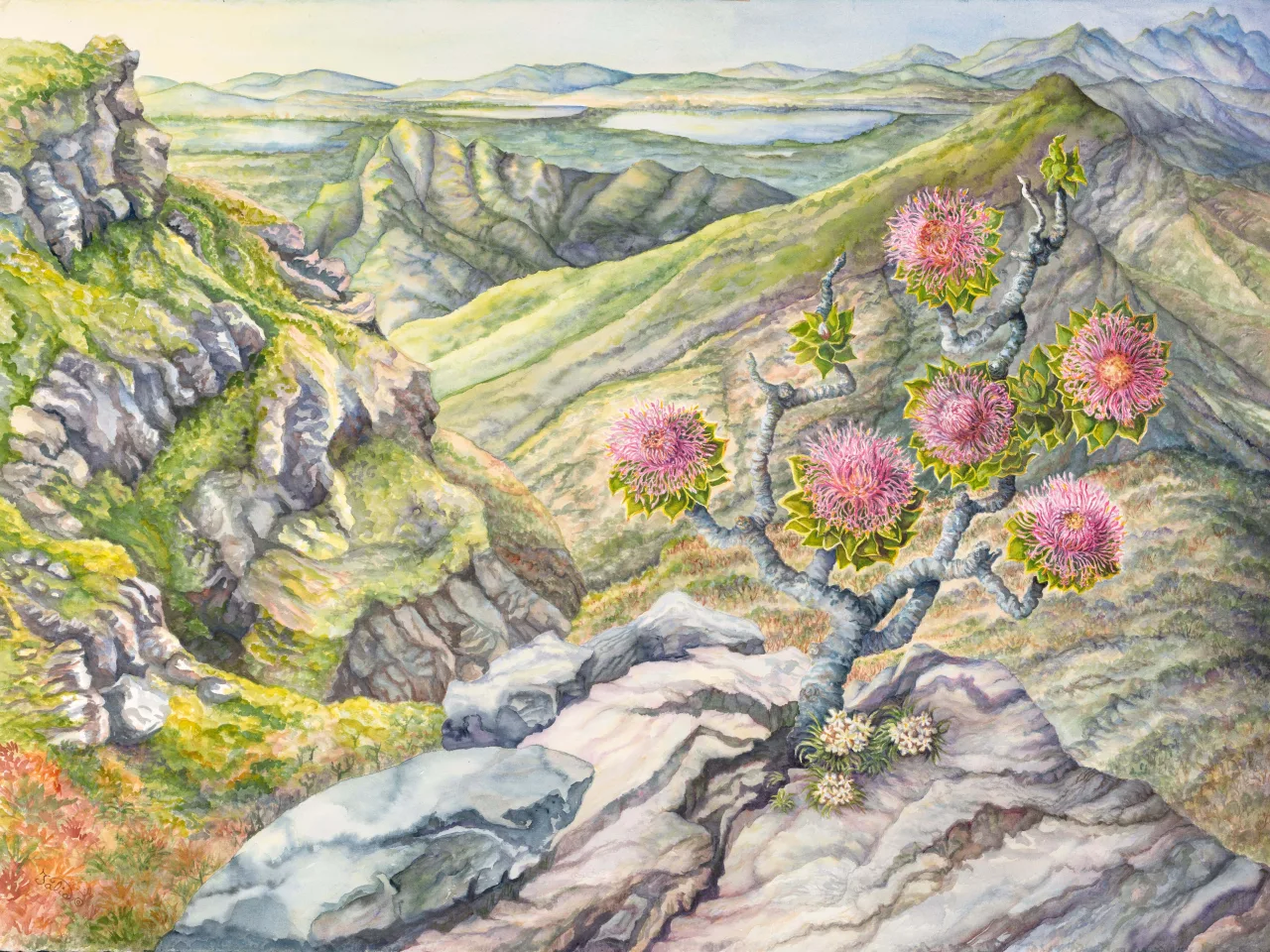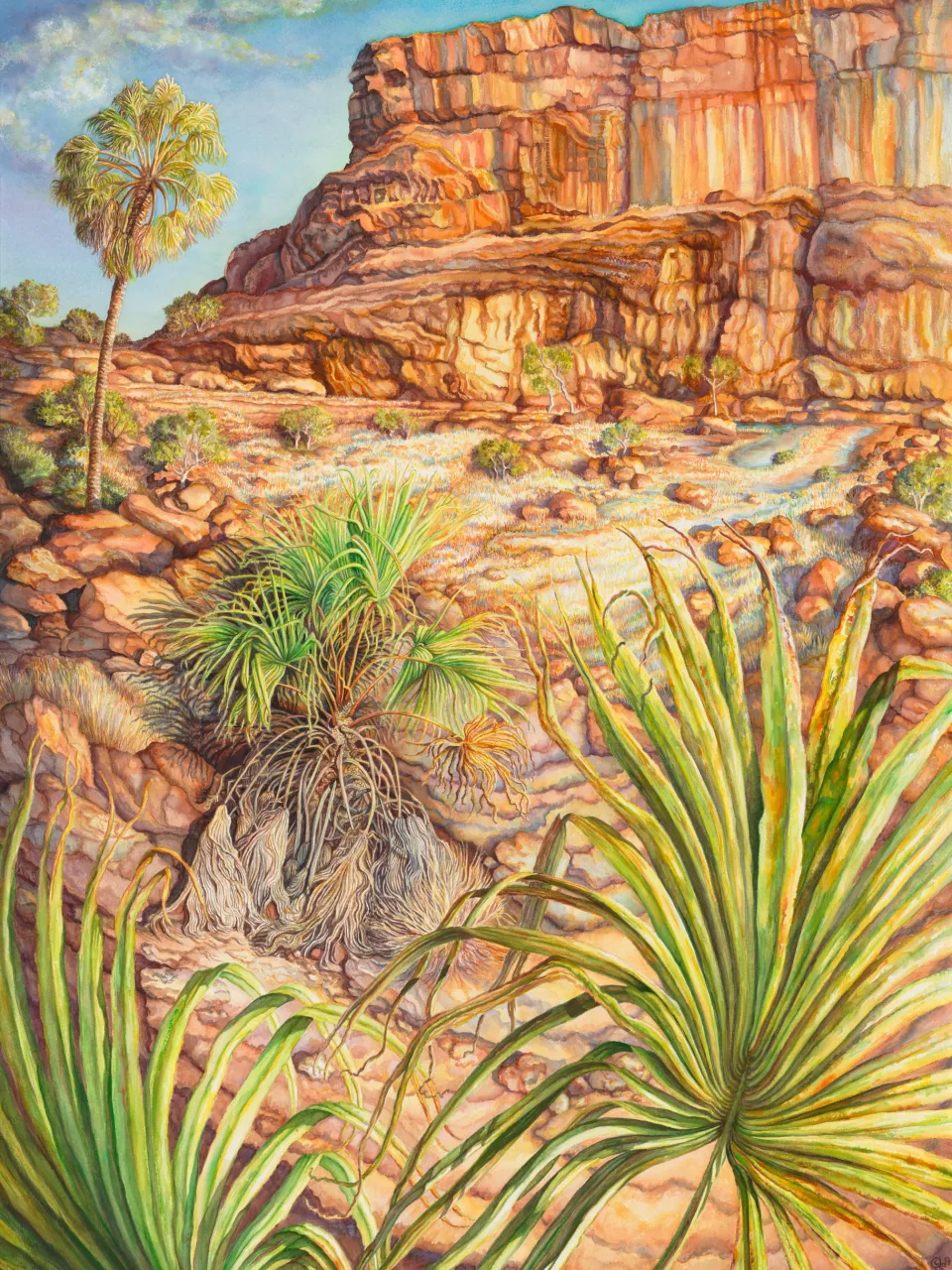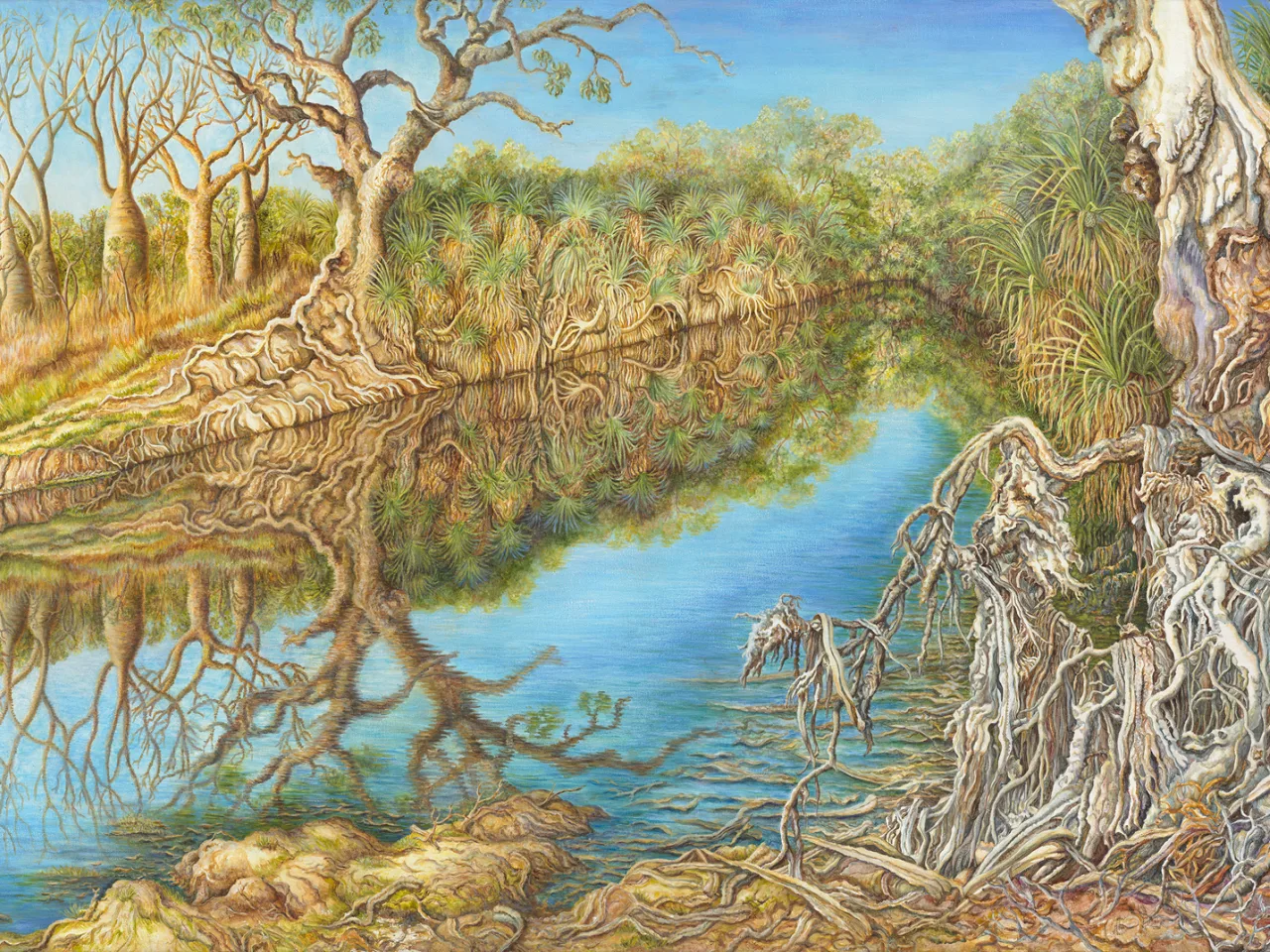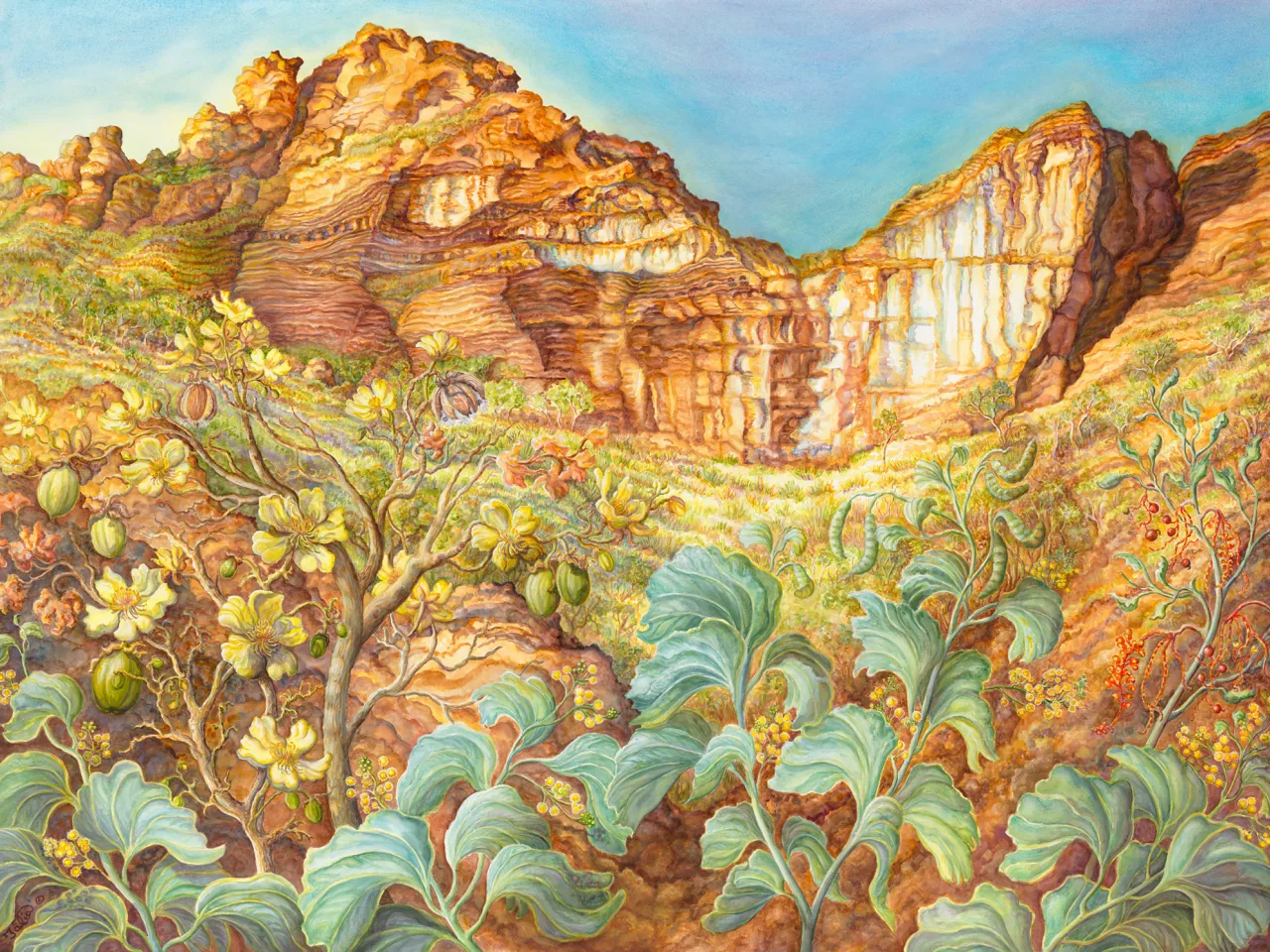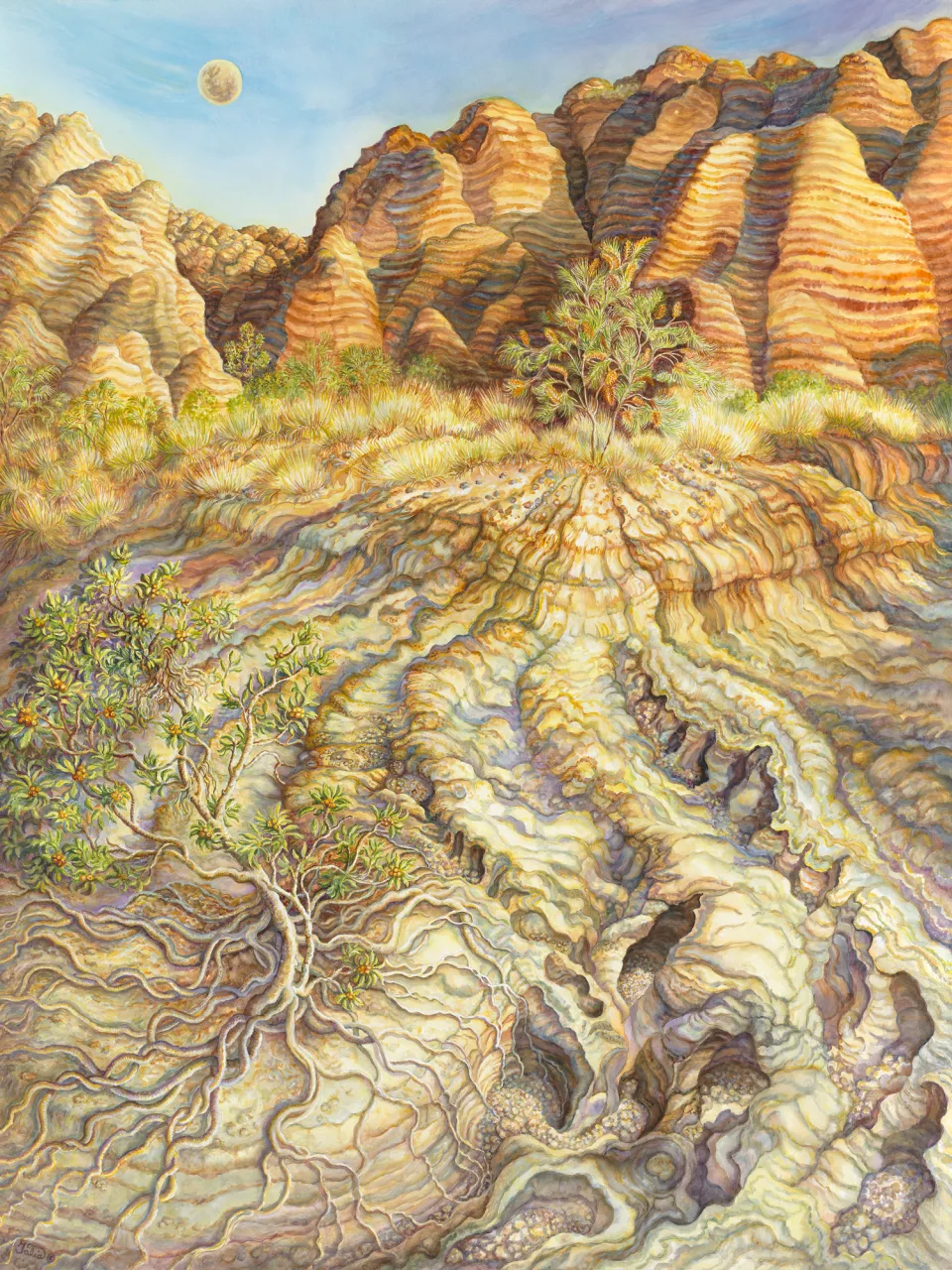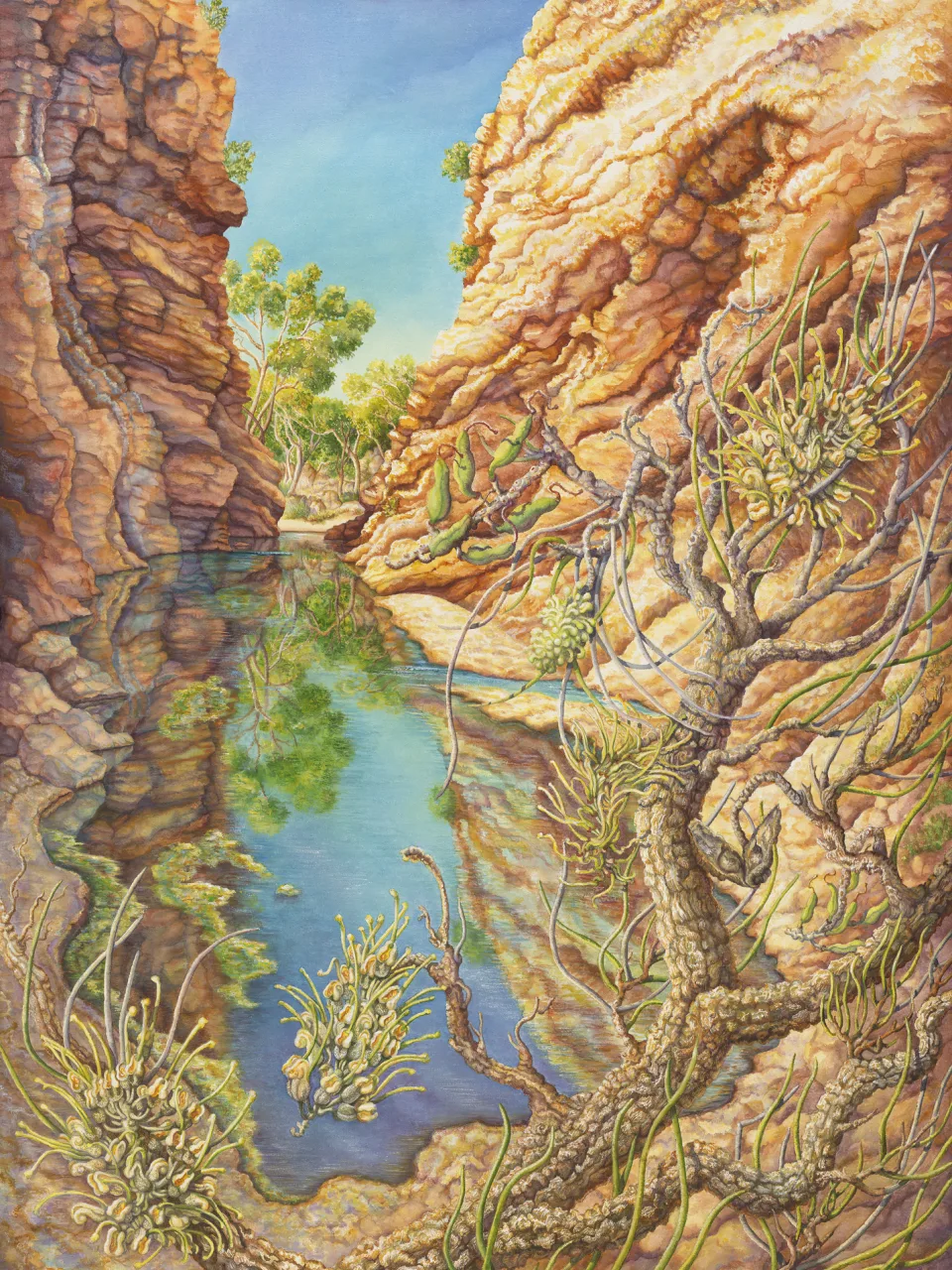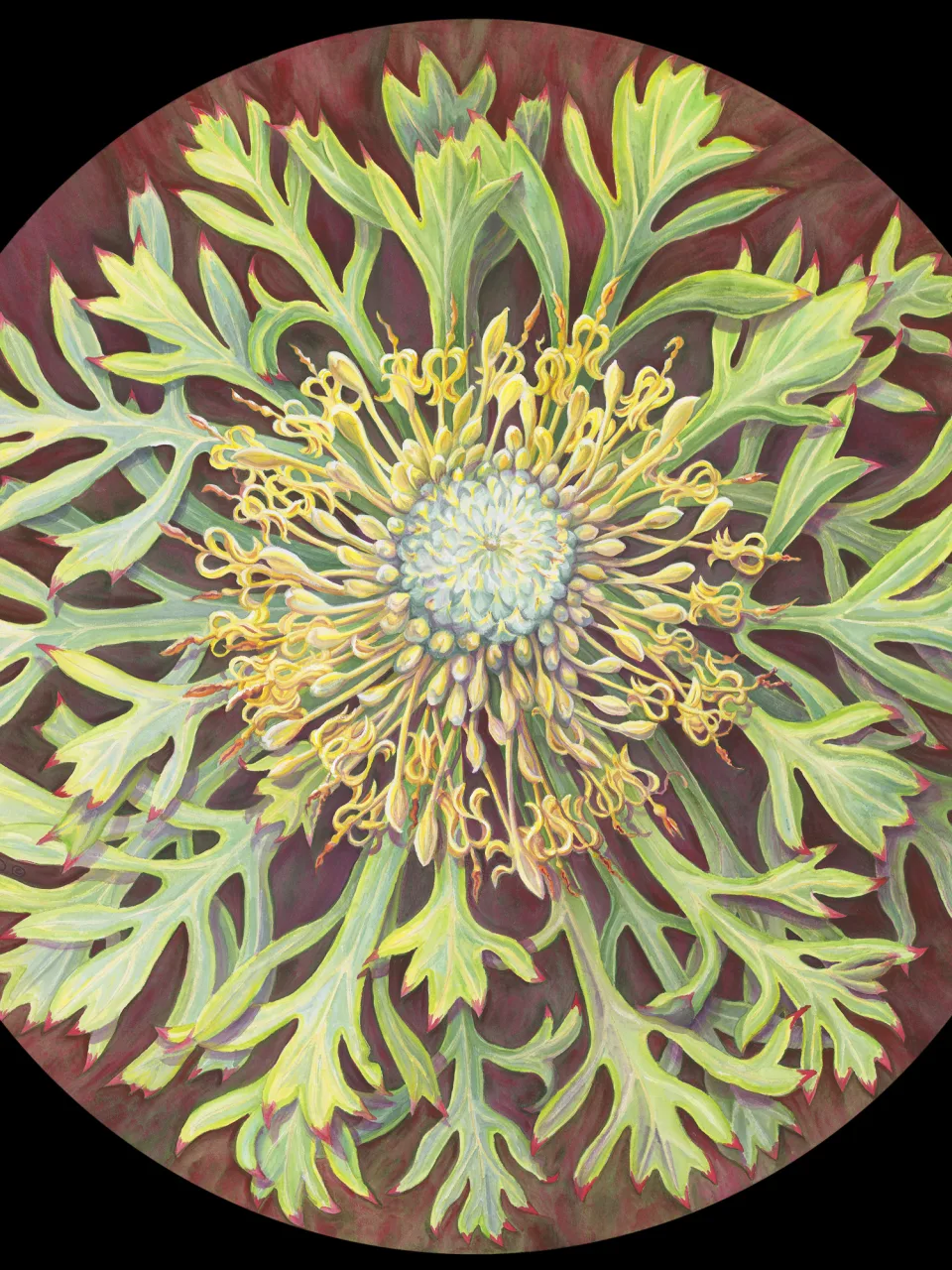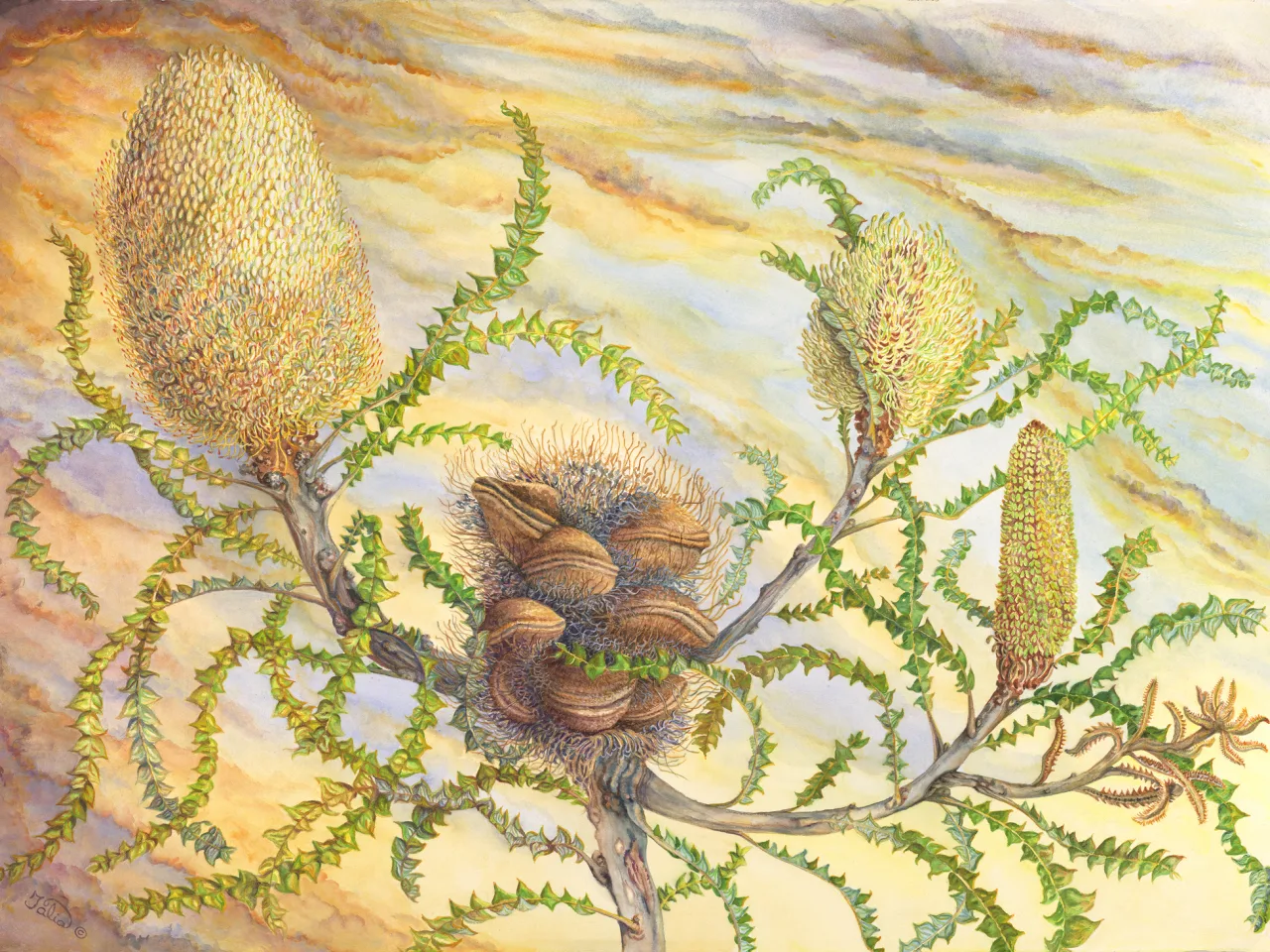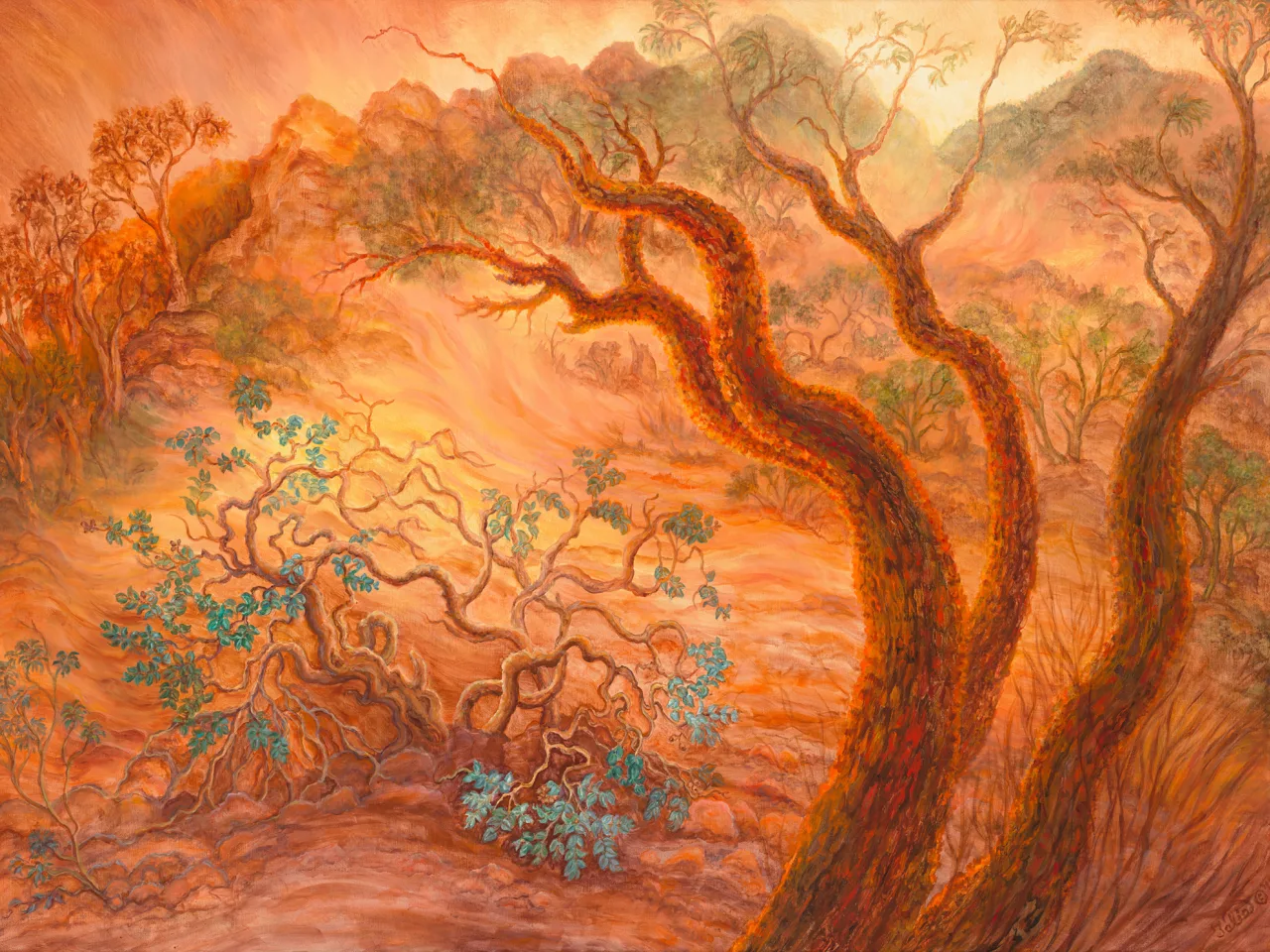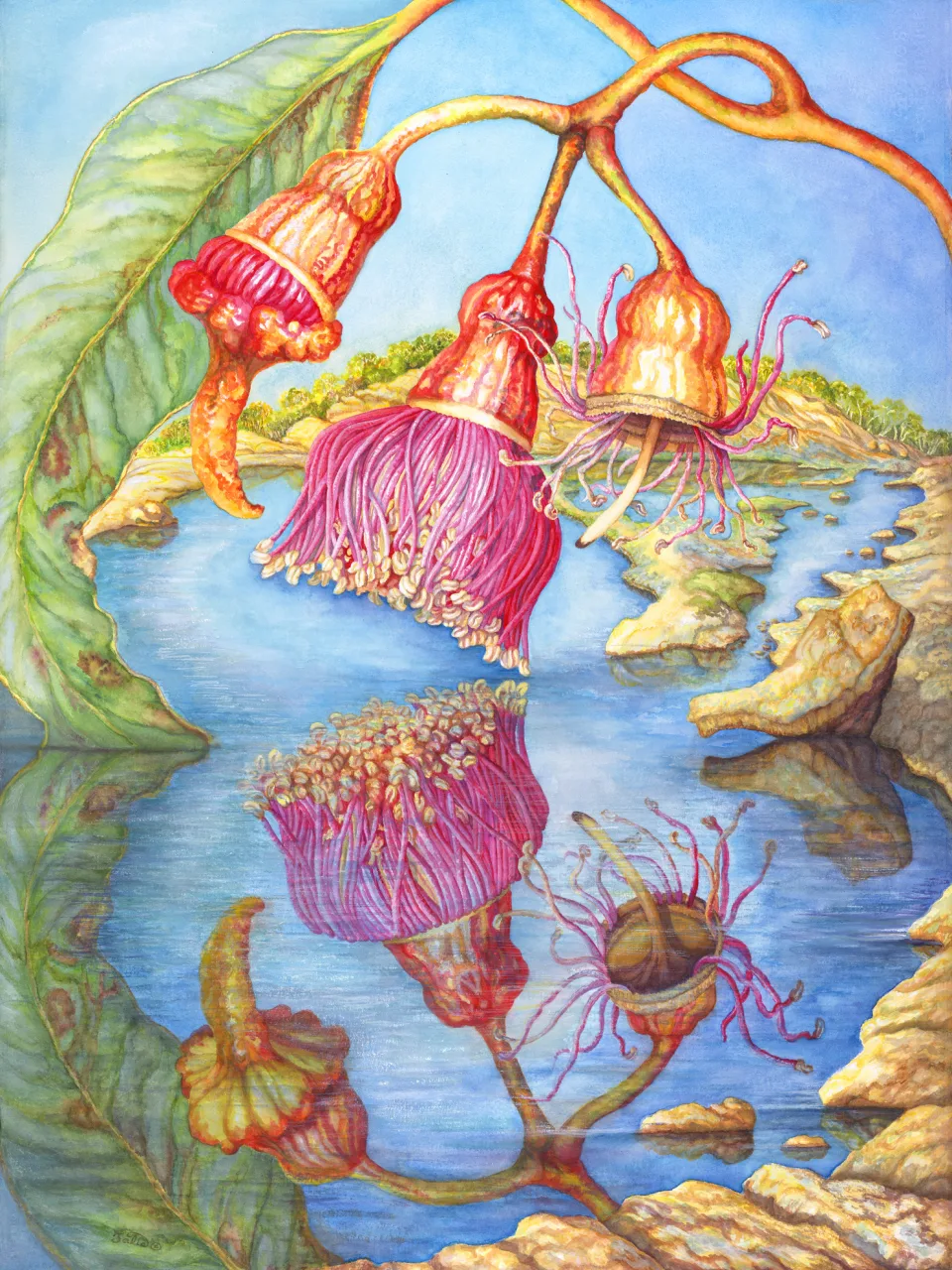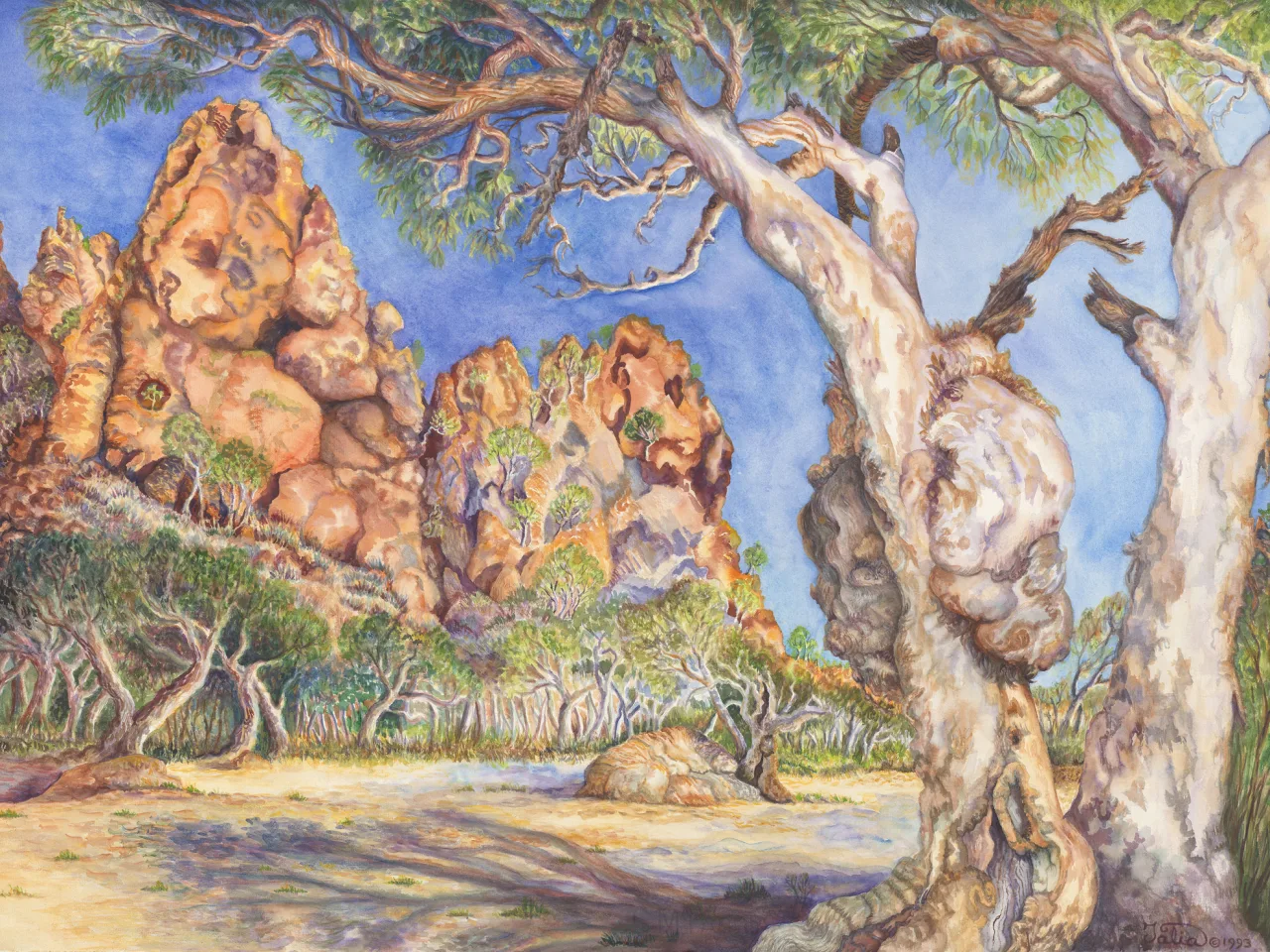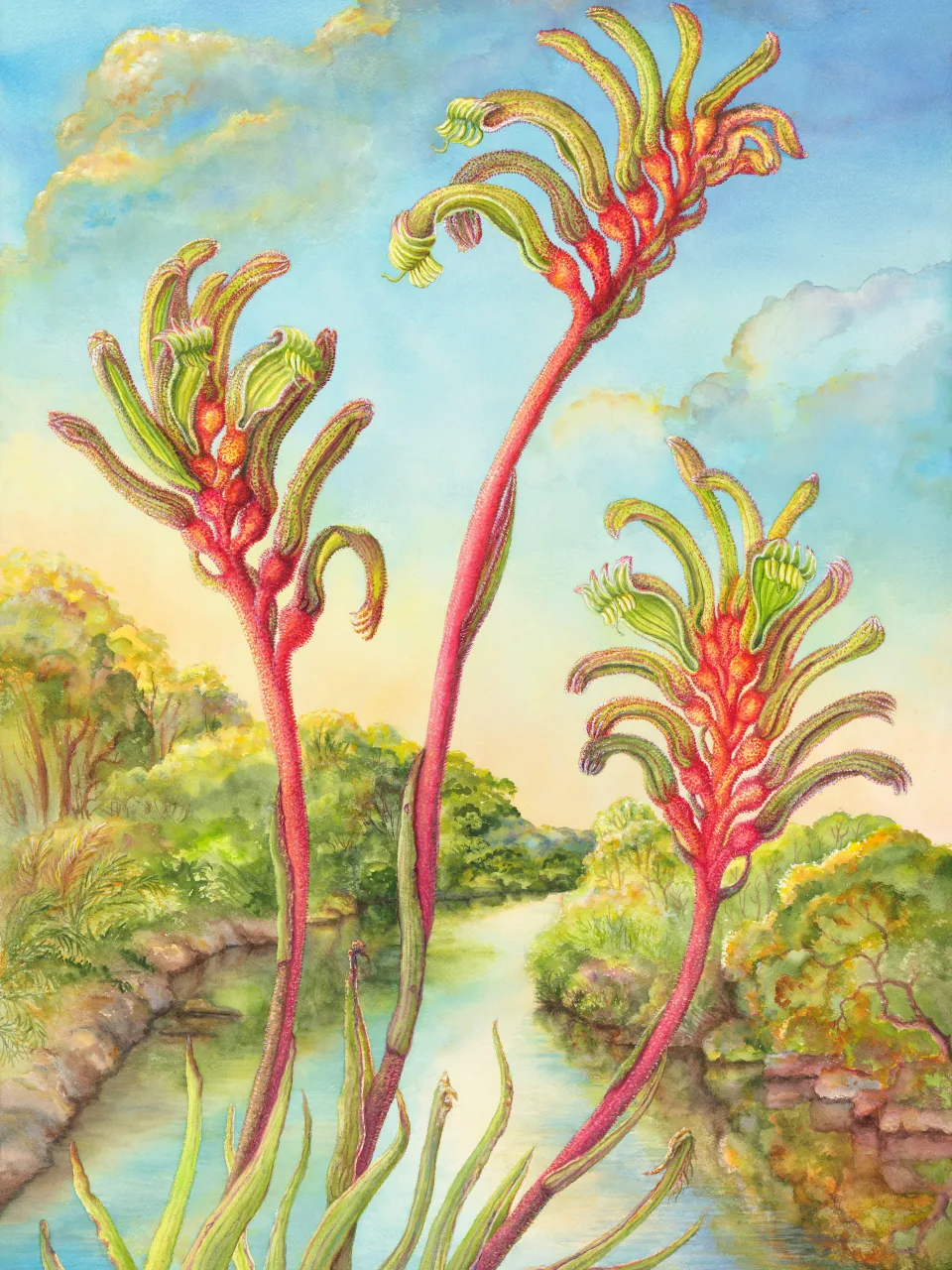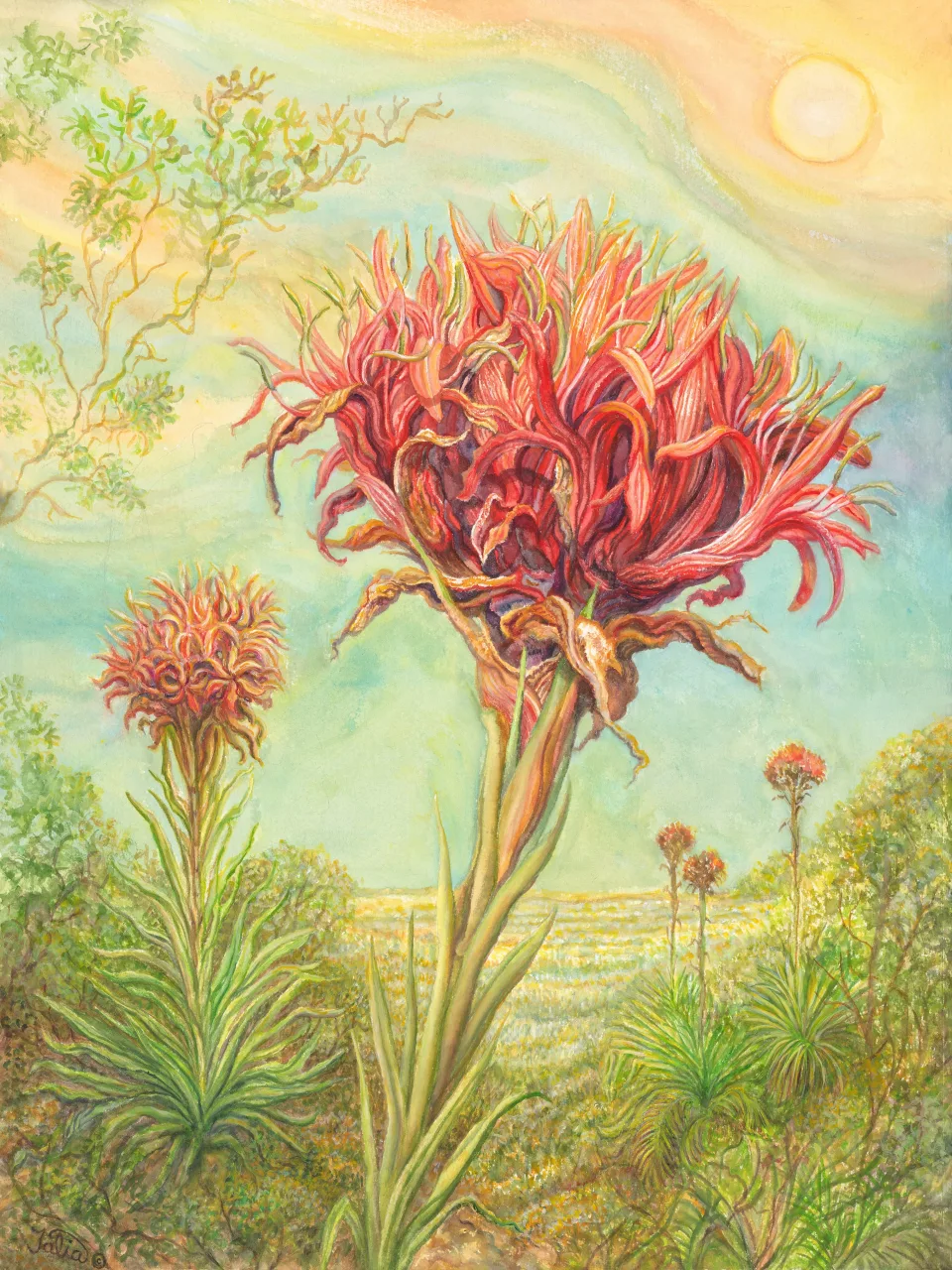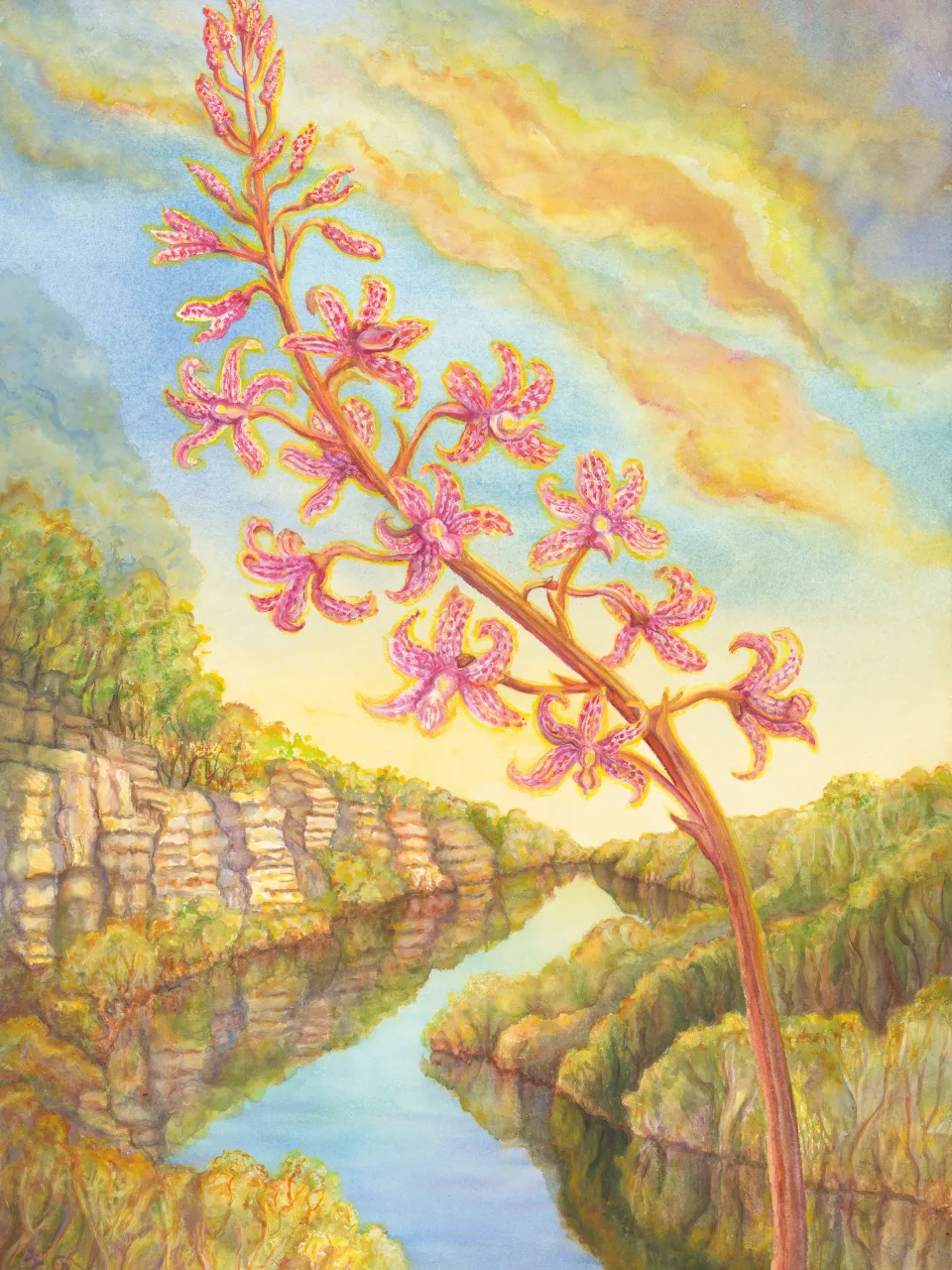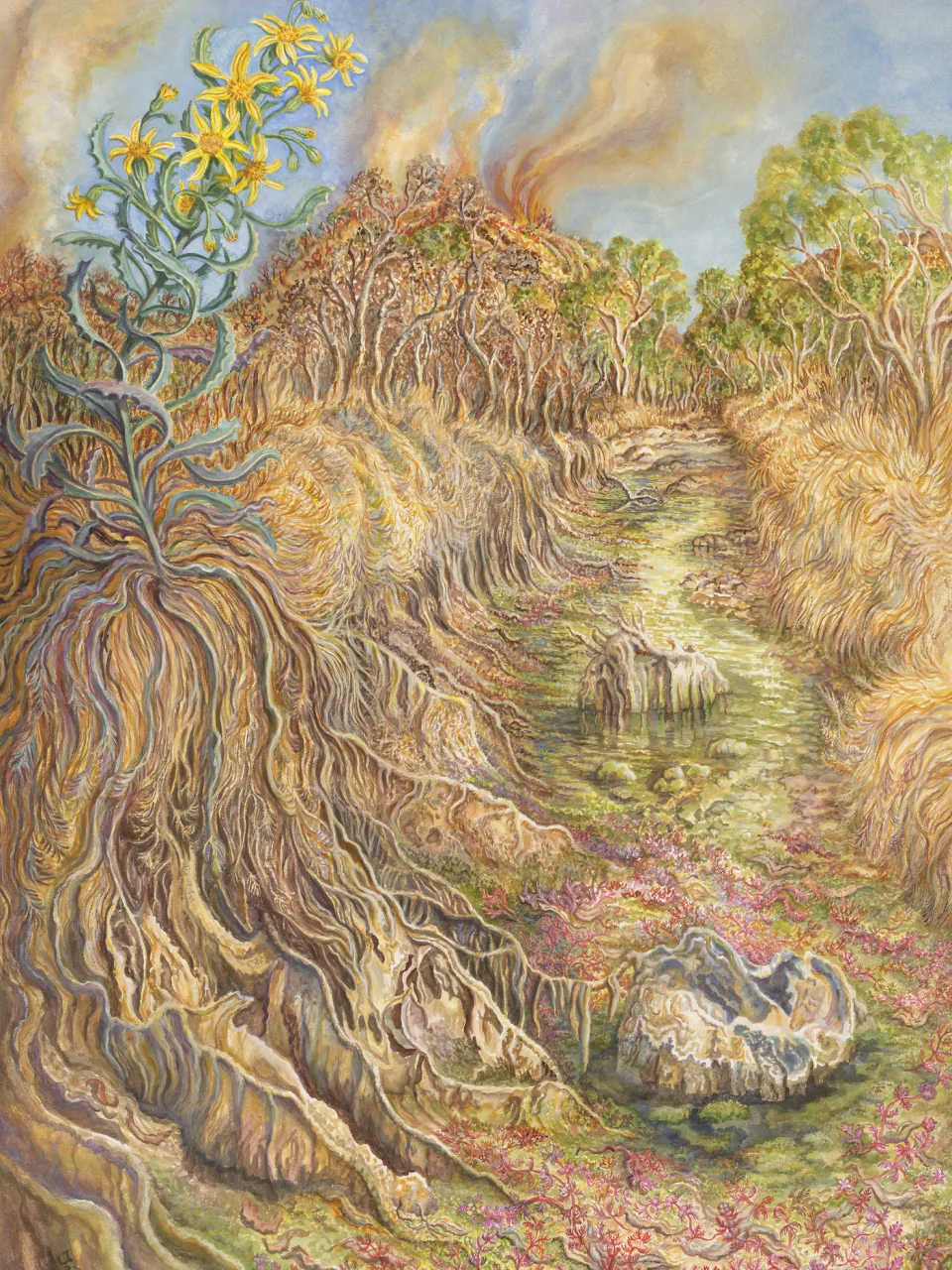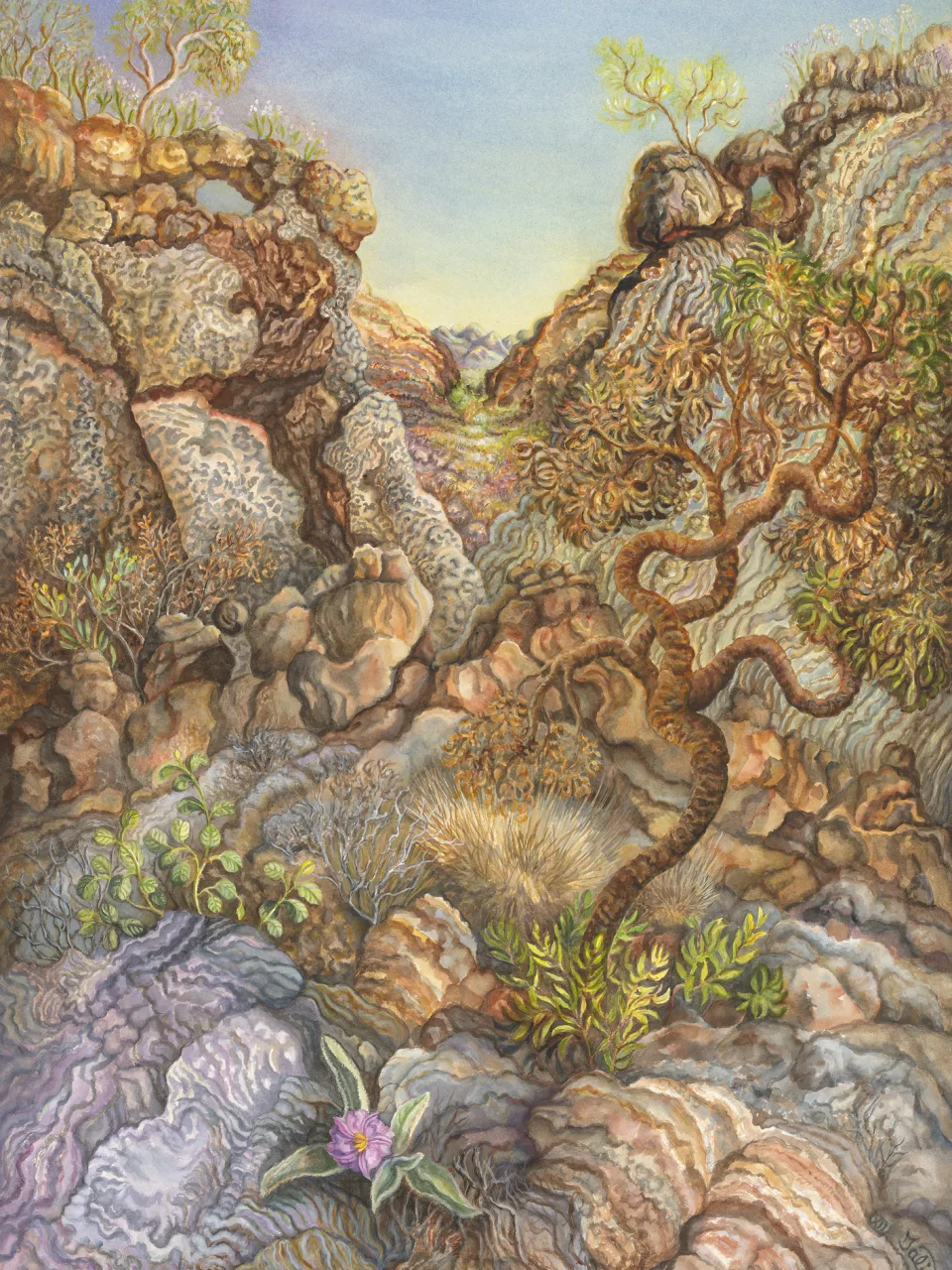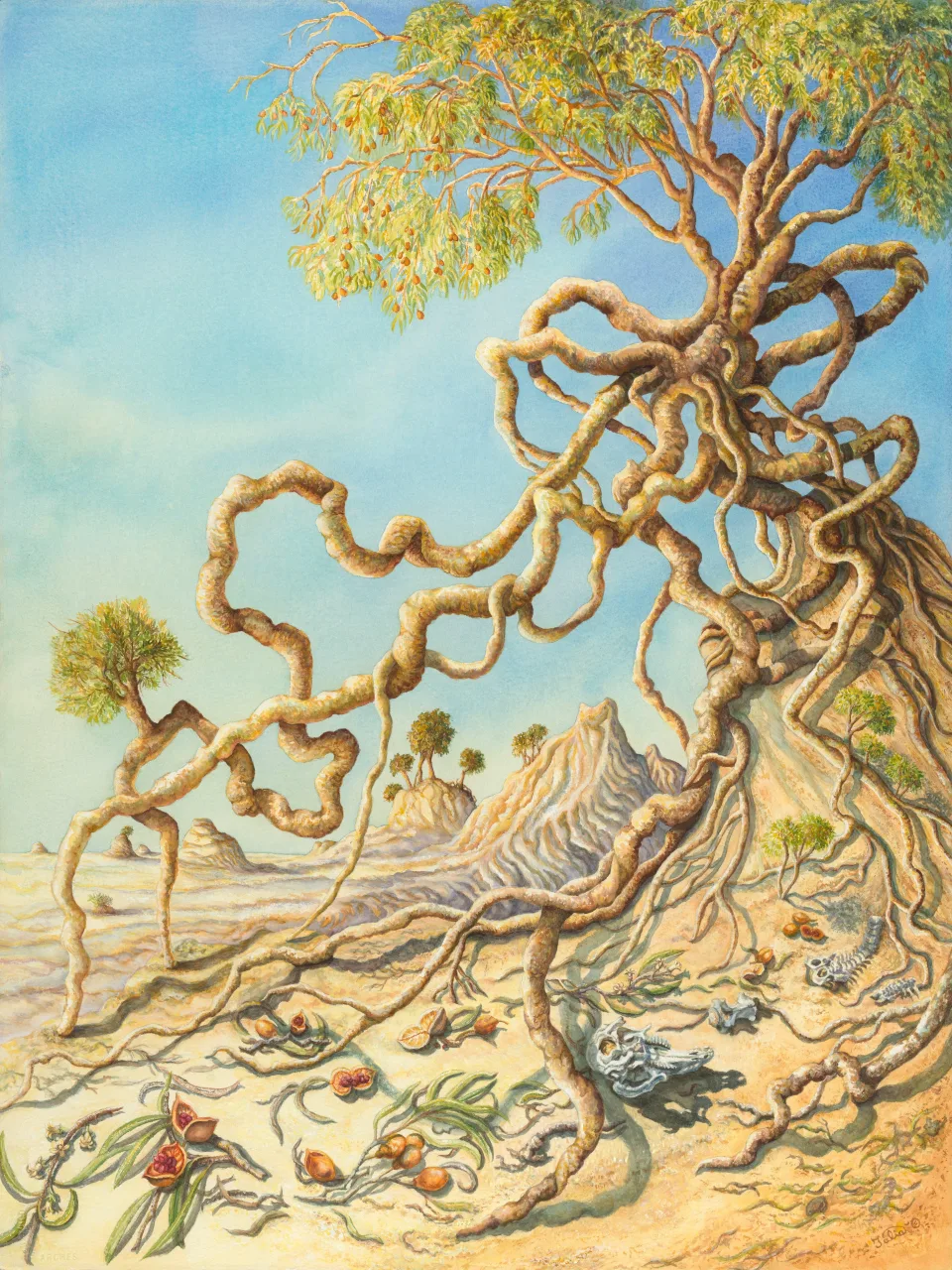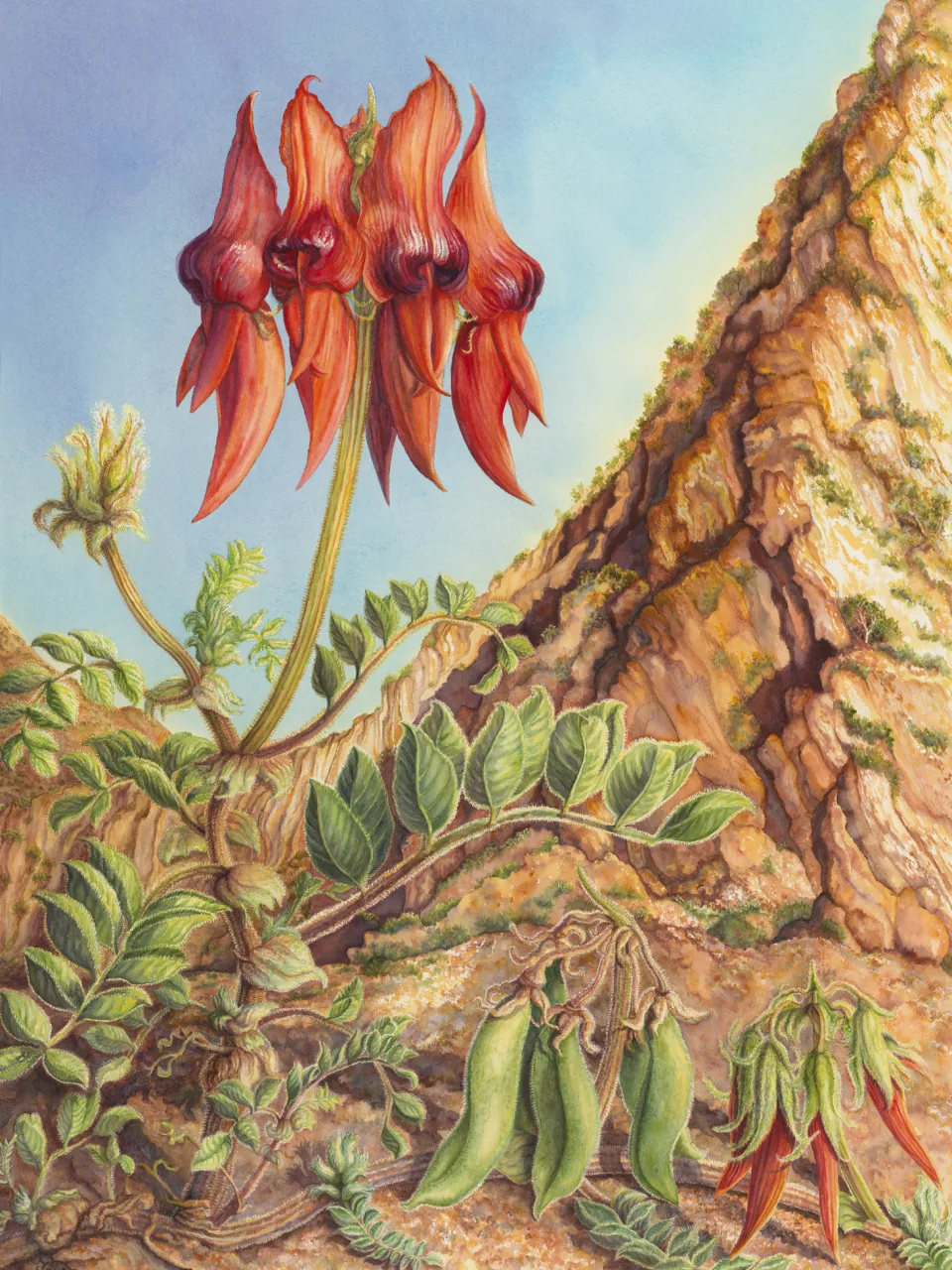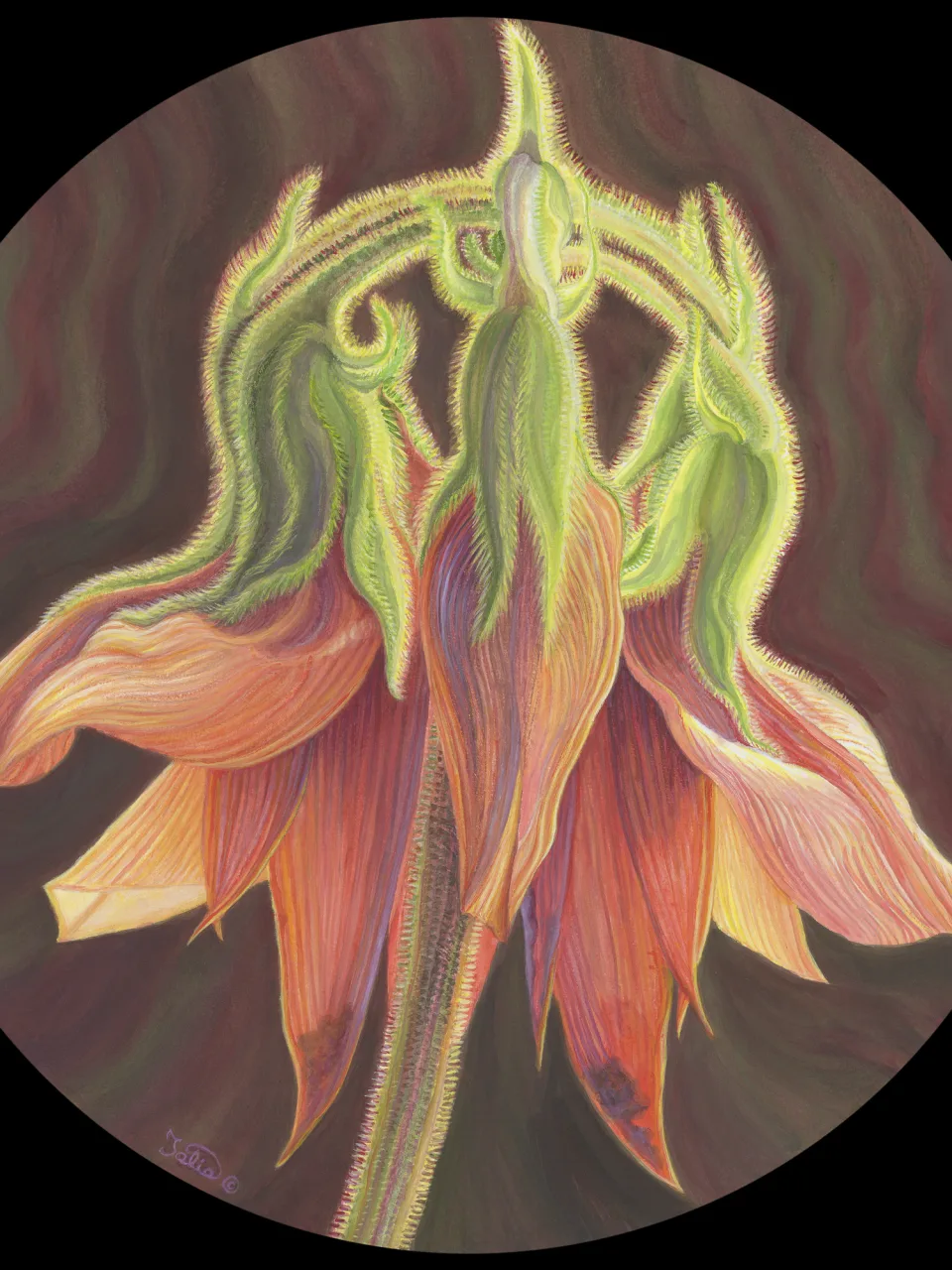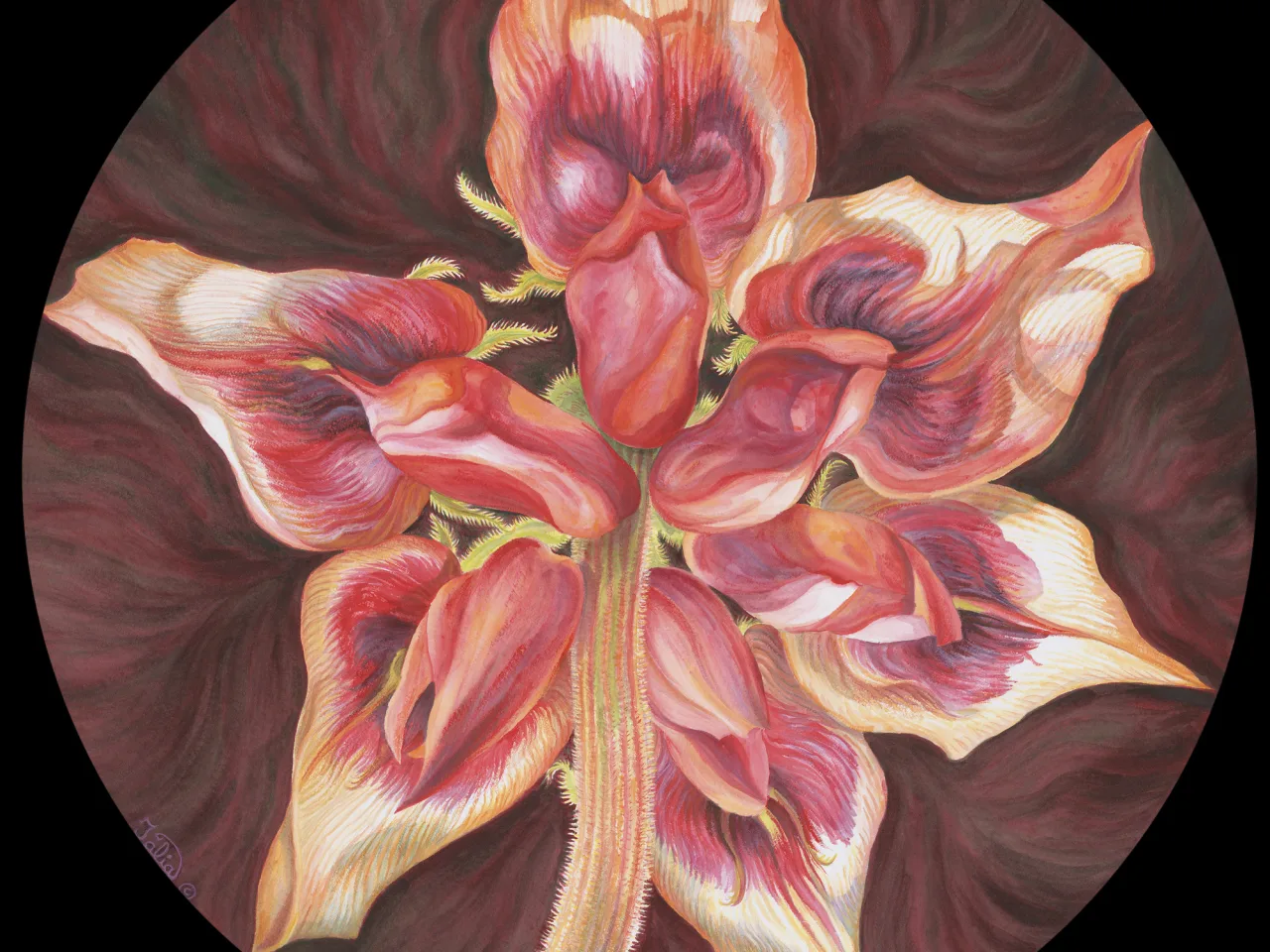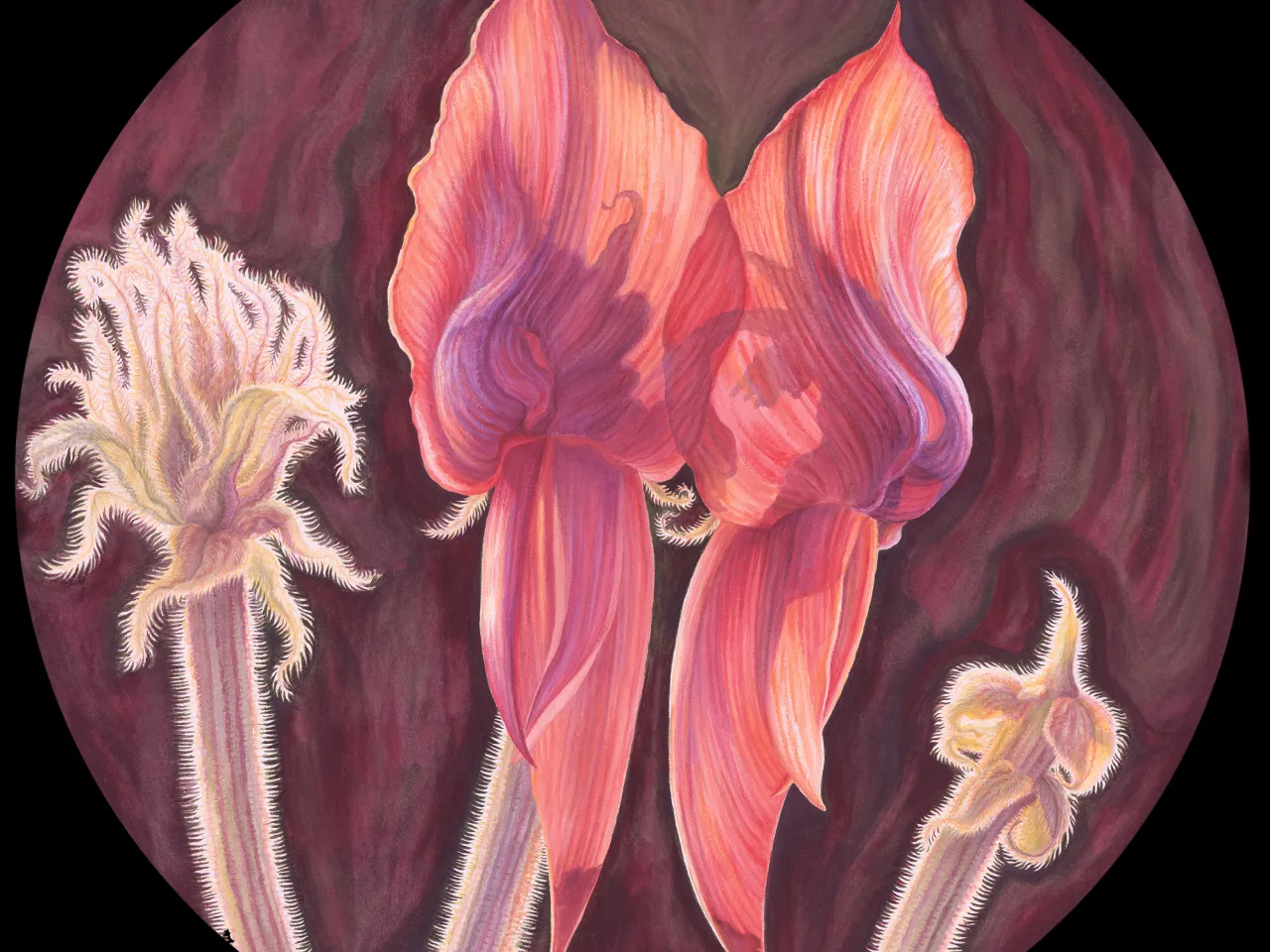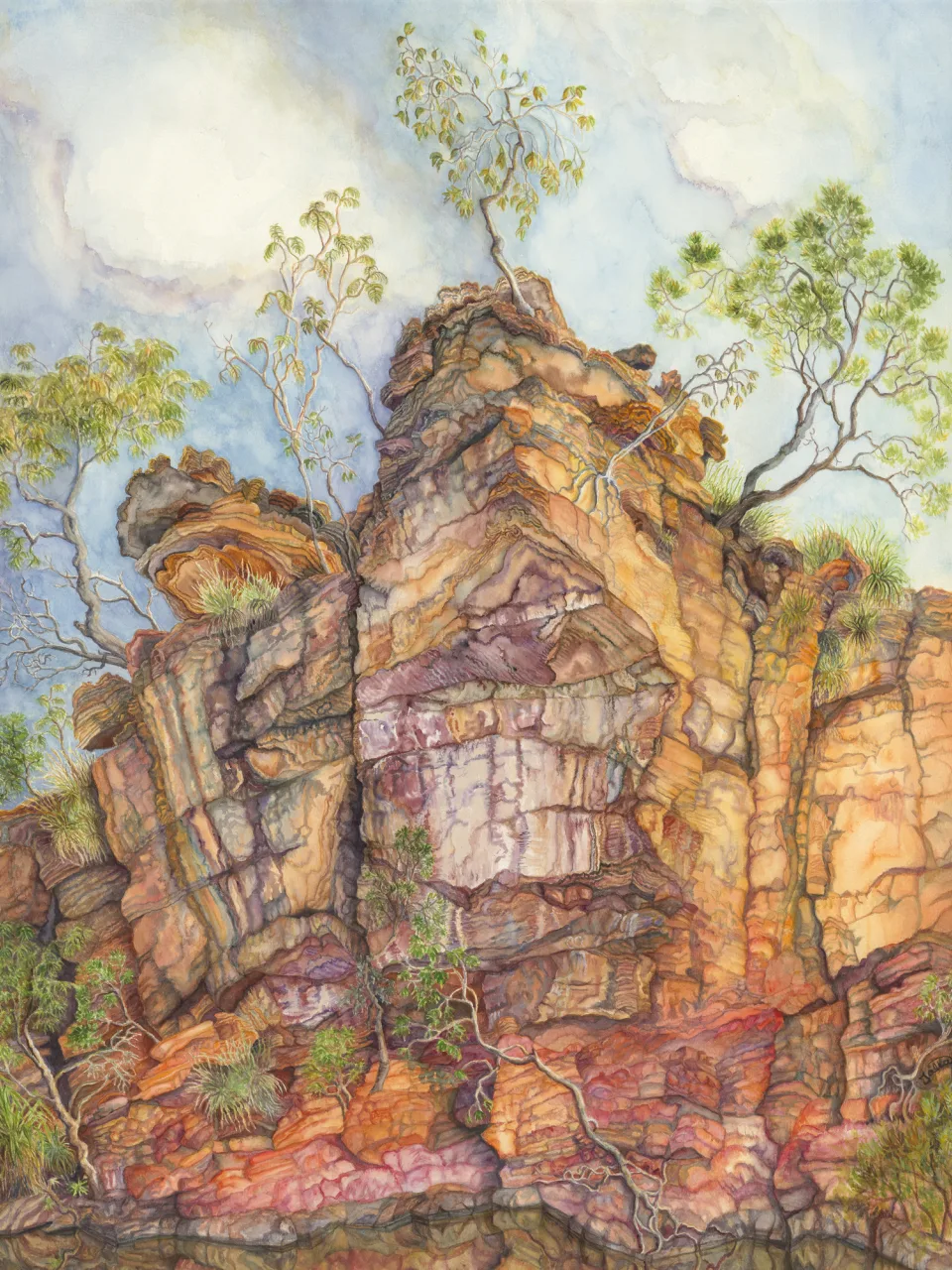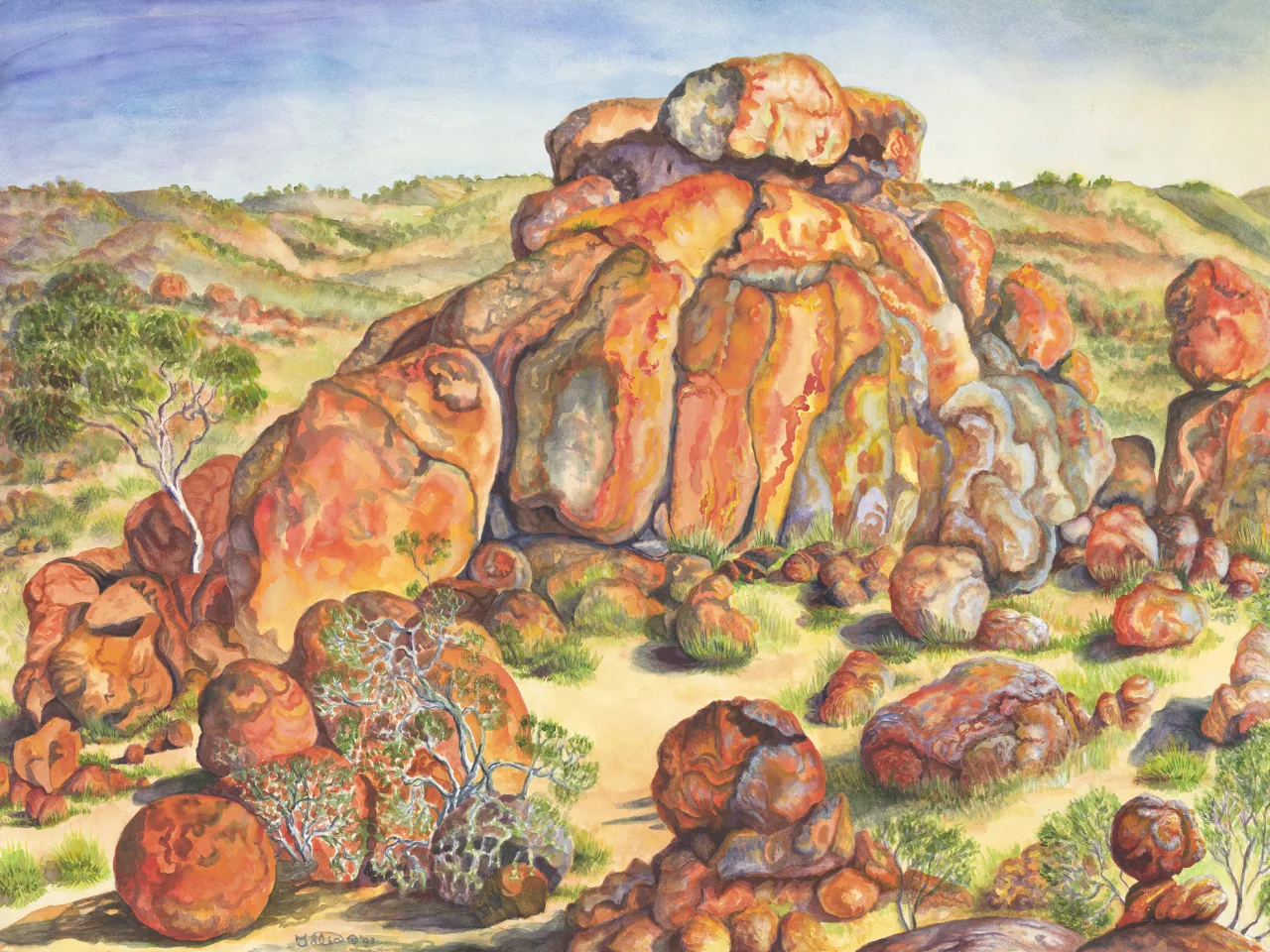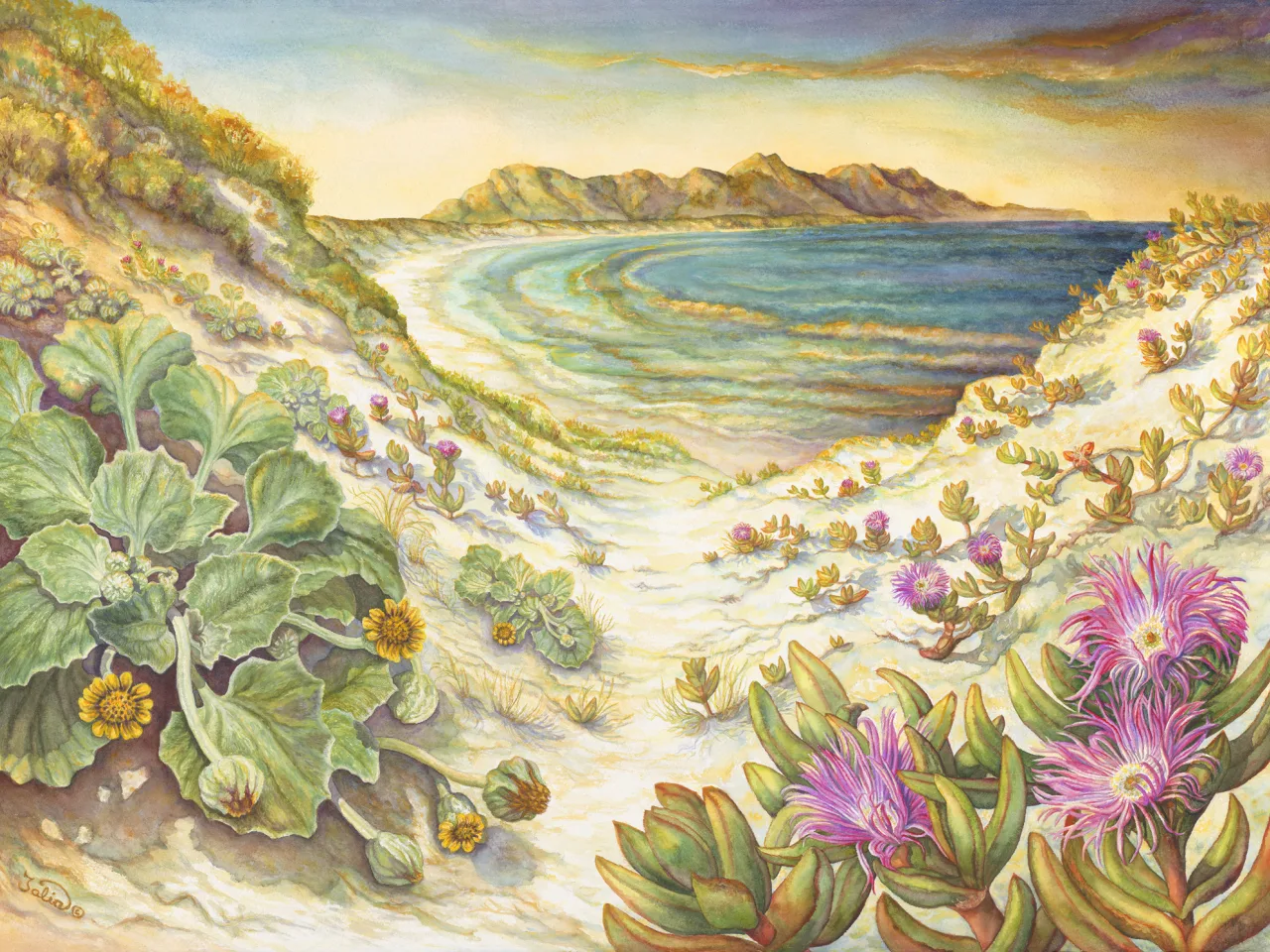Artwork 39 The Sweet Quandongs of Victoria Rock
Section 25
Mistletoes and Sandalwoods
Victoria Rock, Goldfields Woodlands National Park, Western Australia, Western Australia
- 1. Santalum acuminatum (sweet quandong)
Artwork 39
Buy a print
Limited edition giclee archival quality print on 310 gsm Ilford cotton rag (from an original work in watercolour on watercolour paper, 46 cm high x 46 cm wide). Square prints are available in one size, 600 mm x 600 mm
from the artist
“Sweet quandongs” (also known as “native peaches”) (Santalum acuminatum) are semi-parasites—root hemiparasites.
The red fruits are edible, and in the case of one marvellously sweet-flavoured tree, extremely edible! We discovered the profusely fruiting tree detailed in this painting on one of our many visits to Victoria Rock, a large granite inselberg about 45 km south of Coolgardie, in the Goldfields of Western Australia. Although there were two or three other small quandong trees growing nearby, this one had the sweetest fruits, and we also took some back to camp to cook (delicious stewed with apples). Apparently, emus also treasure this food, and undoubtedly spread the seeds. We left many (the not-so-sweet varieties!) for the emus.
Victoria Rock is a wonderful desert oasis, with pools of water—some semi-permanent “gnammas” or “rock basins”—and many interesting plants, including sundews (Drosera), cassias (Senna species), hop bushes (Dodonaea), one-sided bottlebrushes (Calothamnus), and many mosses and lichens. For a very interesting overview of Australian granite hills and islands see Ian Bayly’s Rock of Ages.
Quandongs belong to the Santalaceae (sandalwood) family, and this family of shrubs, herbs, and small trees is widely distributed in tropical and temperate regions, including into Malaysia and Polynesia. Quandongs (Santalum acuminatum), however, are endemic to Australia, and can be found in mulga country and other outback locations such as the Goldfields of Western Australia—primarily in southern Australian locations. Sandalwood (Santalum spicatum) was once heavily harvested in Australia, and plants were pulled up by the roots for the aromatic oils present in all of the plant (Moore, 2005, p. 437). They are now strictly protected and supplies regulated.
